On our way back from Coonoor, we took the NH4 (Mumbai – Pune – Bangalore Highway), and decided to take a break at Chitradurga. It’s a small dusty town, which is surrounded by small hills and many windmills. We had heard of an ancient fort at Chitradurga, and decided to visit it before leaving for Mumbai.
The fort is very close to the main highway, hidden behind hills. The fort doors open at 6am, and that’s the best time to see it, because of the light and the cooler weather. It is probaly the most beautiful fort we have seen in India. Not much remains today save walls and ruins, but one can make out what a magnificent fort it must have been in its time.
If you have time, do walk through the city. There are plenty of ancient buildings still standing.
From Wikipedia: Chitradurga Fort or as the British called it Chitaldoorg, straddles several hills and a peak overlooking a flat valley in the Chitradurga District, Karnataka, India. The fort’s name Chitrakaldurga, which means ‘picturesque fort’ in Kannada, is the namesake of the town Chitradurga and its administrative district.
Built in stages between the 17th and 18th centuries by the dynastic rulers of the region, including the Rashtrakutas, Chalukyas and Hoysalas as well as the Nayakas of Chitradurga, feudal lords in the Vijayanagar Empire, the fort is a marvel. The Nayakas of Chitradurga, or Palegar Nayakas, were most responsible for the expansion of the fort between the 15th and 18th centuries. They were defeated by Hyder Ali at Chitradurga in 1779. Later the fort was expanded and strengthened by Hyder Ali and his son Tippu Sultan,who succeeded Madakari Nayaka V, the last ruler of the Nayaka clan.
The fort is built in a series of seven concentric fortification walls with various passages, a citadel, masjid, warehouses for grains and oil, water reservoirs and ancient temples. There are 18 temples in the upper fort and one huge temple in the lower fort. Among these temples the oldest and most interesting is the Hidimbeshwara temple. The masjid was an addition during Hyder Ali’s rule.The fort’s many interconnecting tanks were used to harvest rain water, and the fort was said to never suffer from a water shortage.
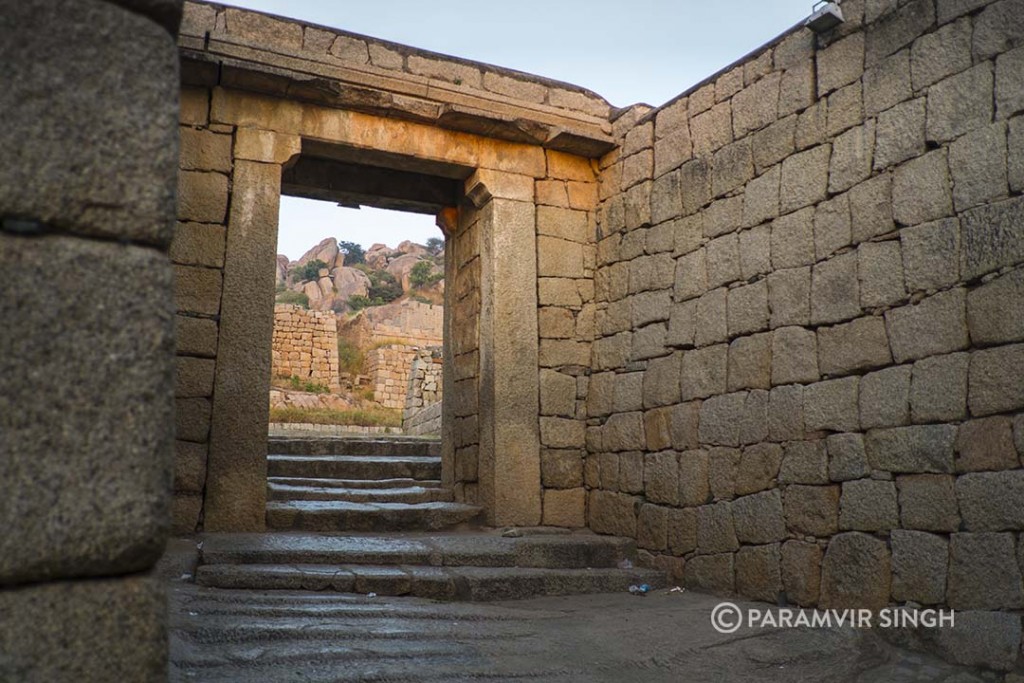
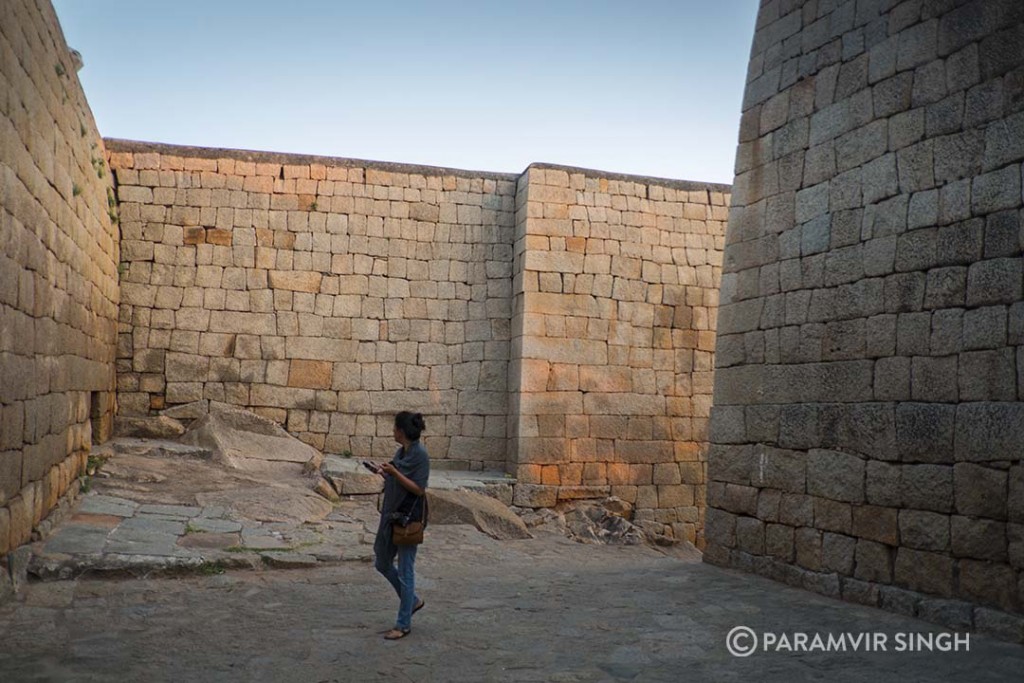
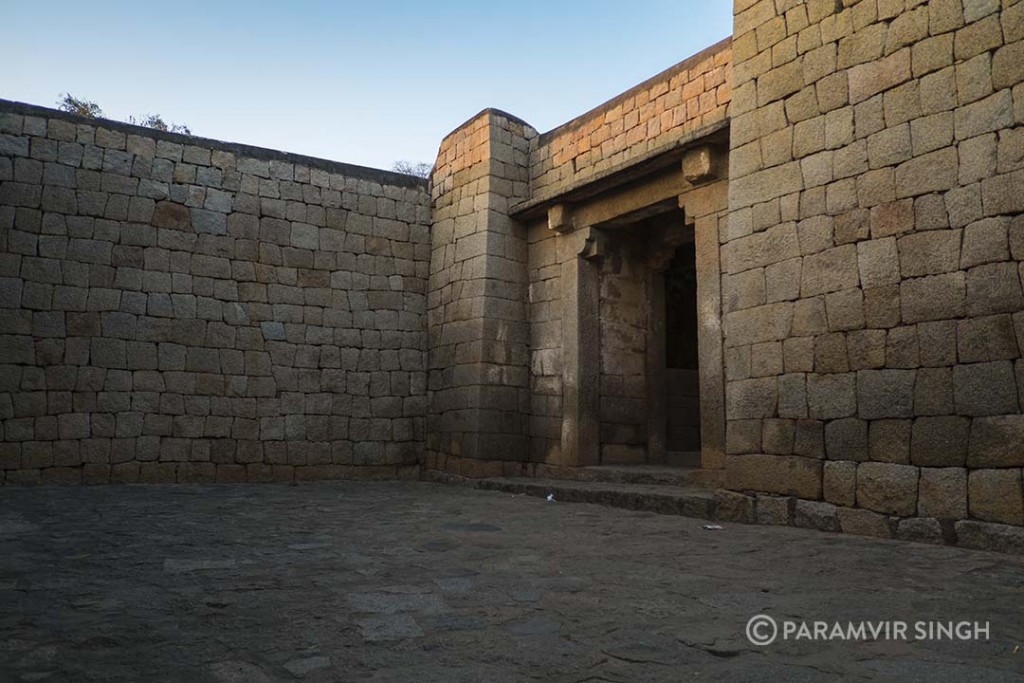
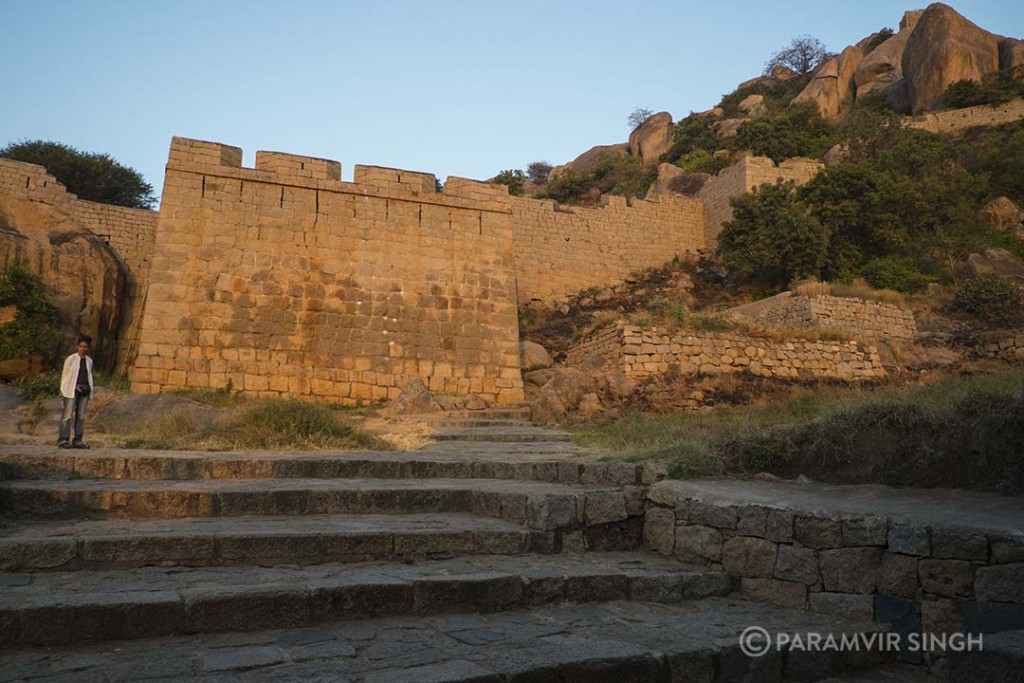
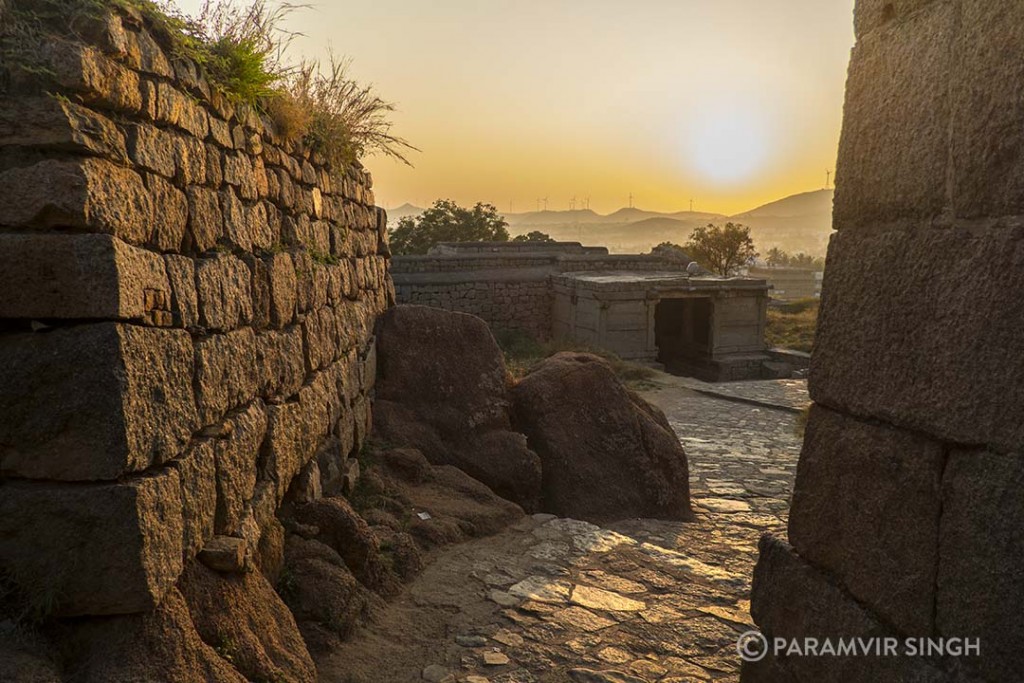
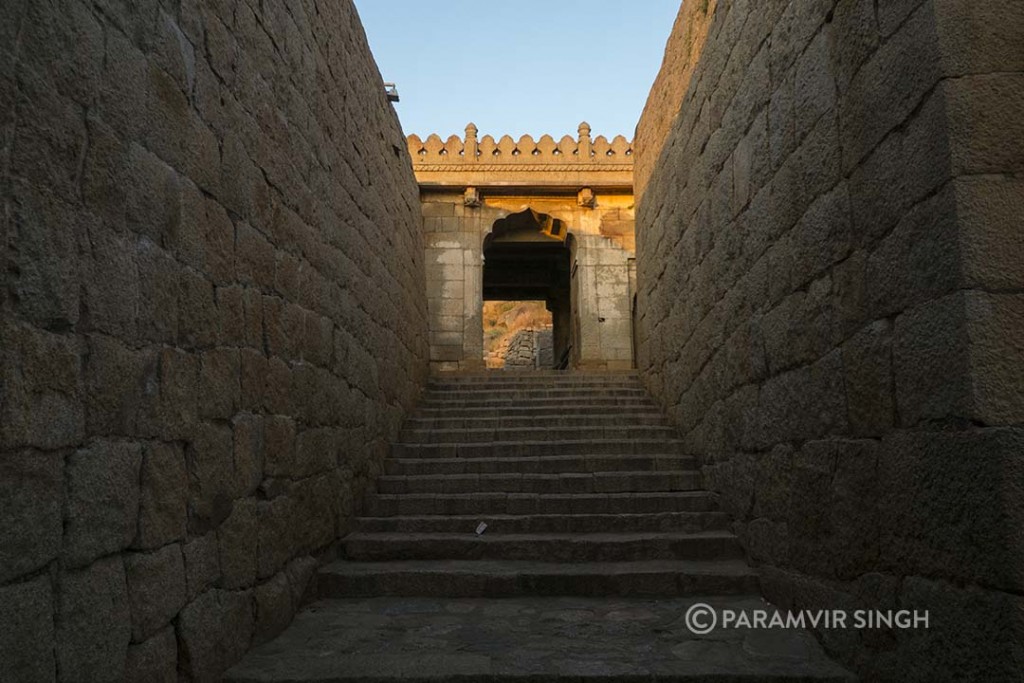
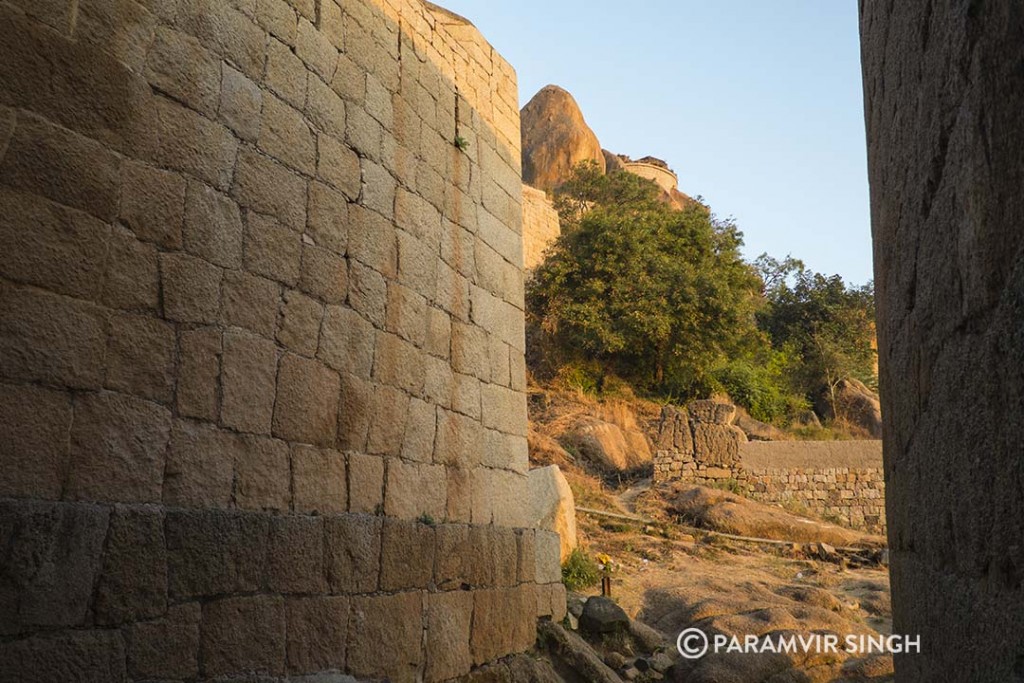
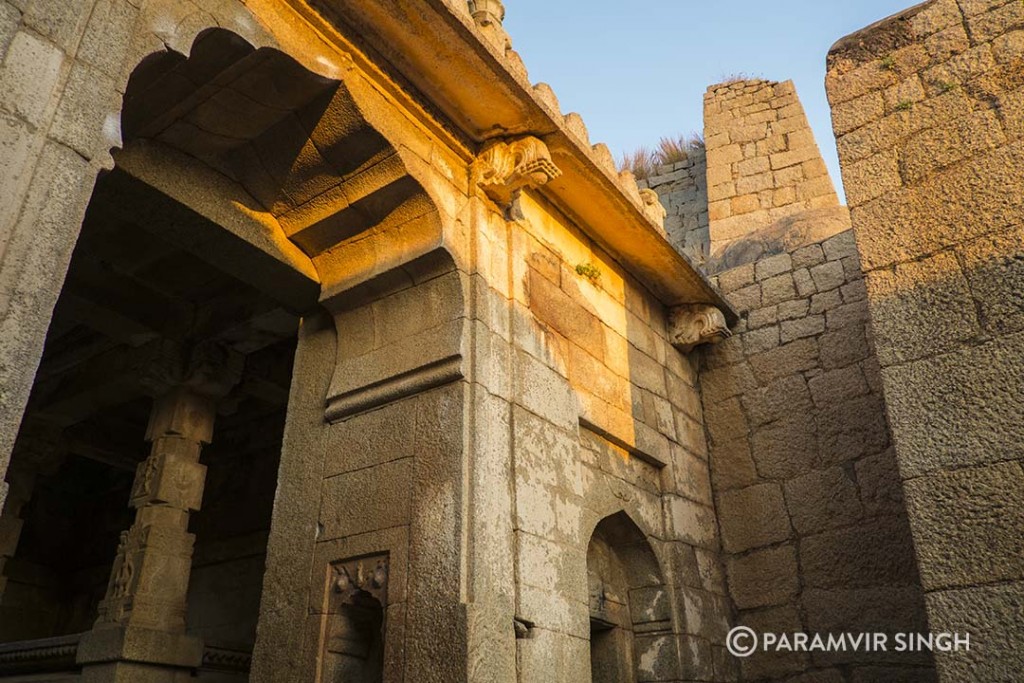
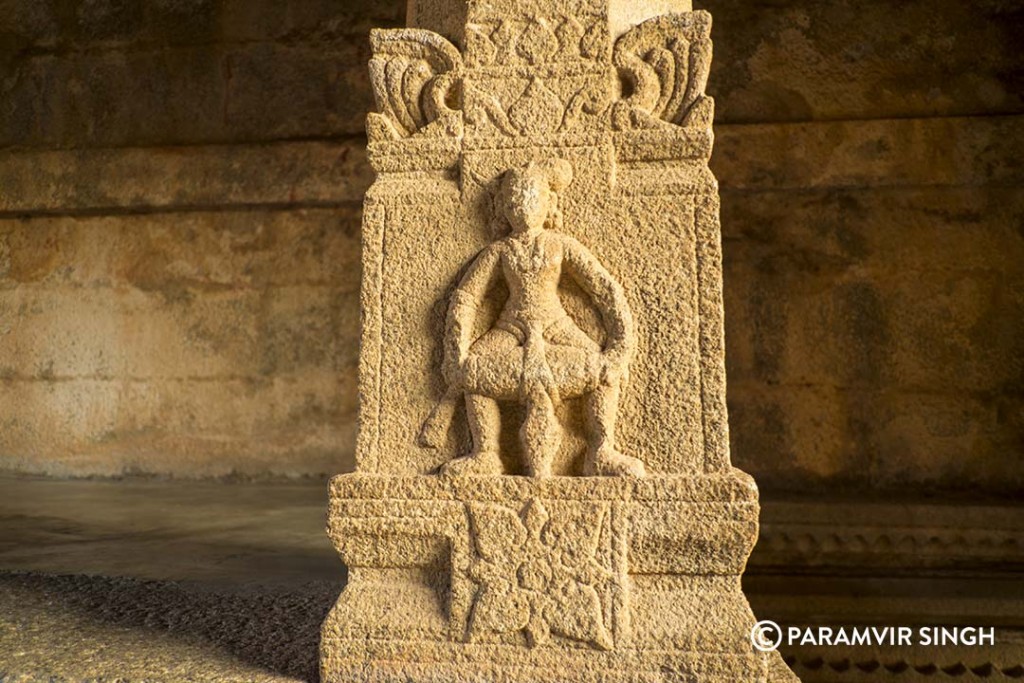
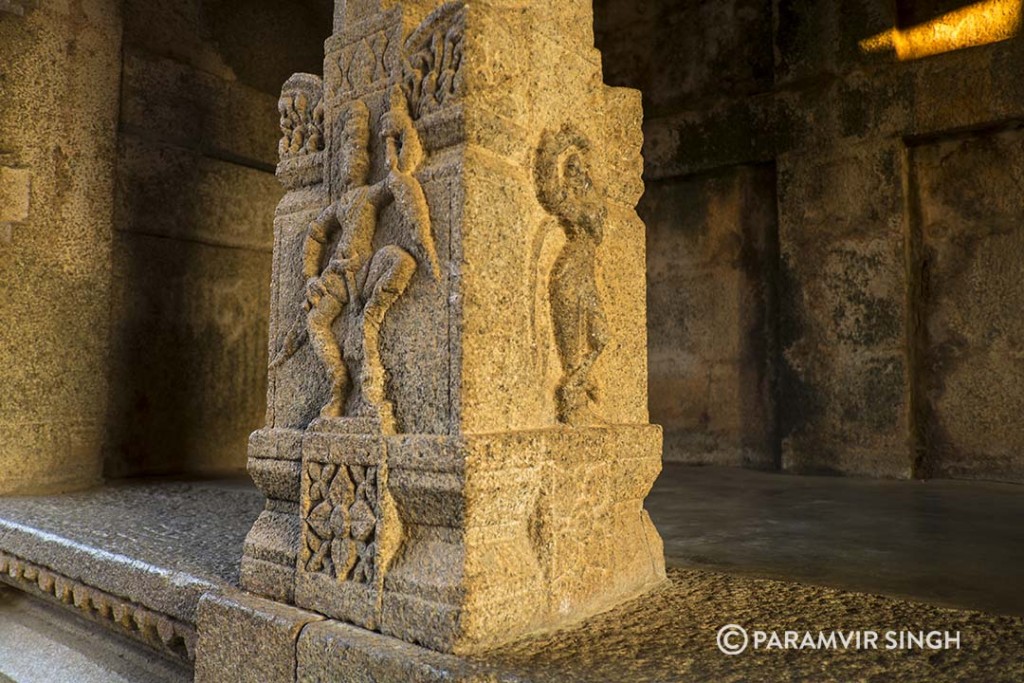
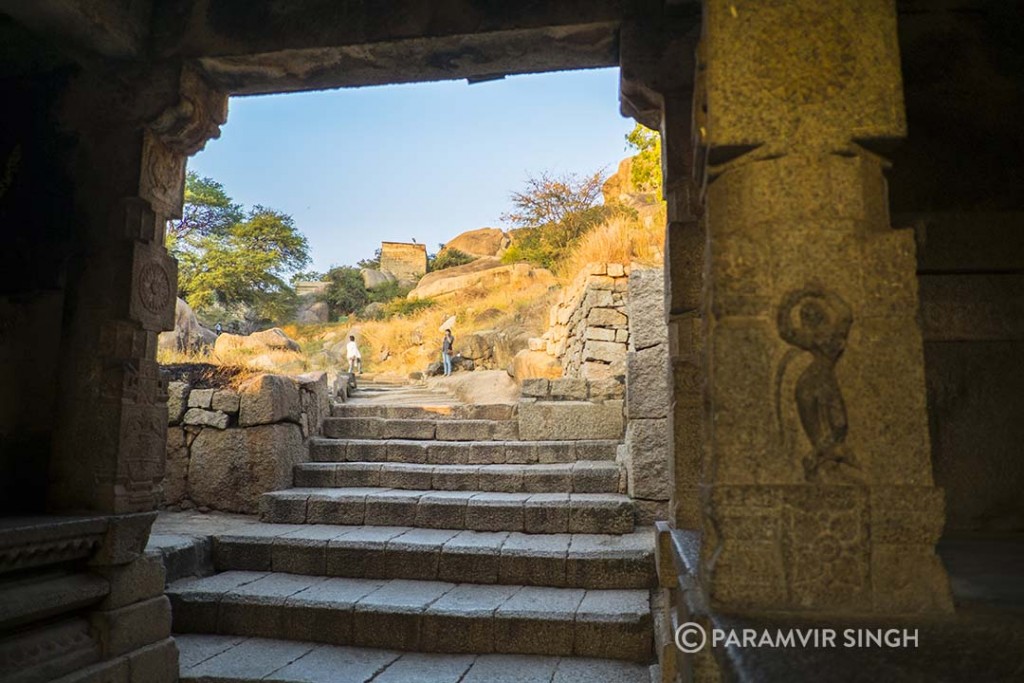
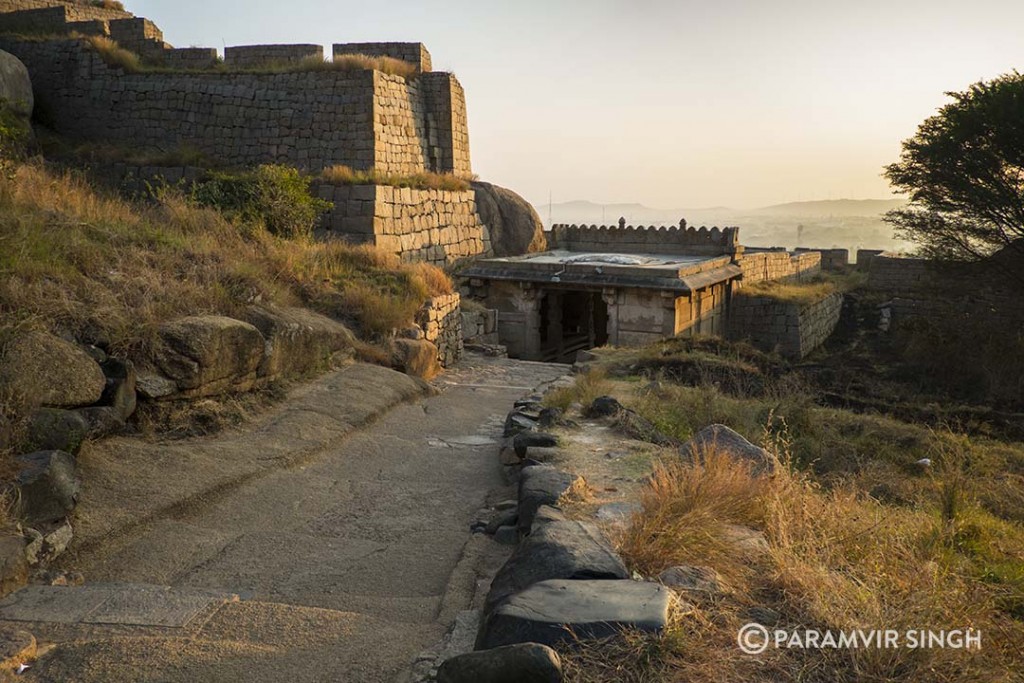
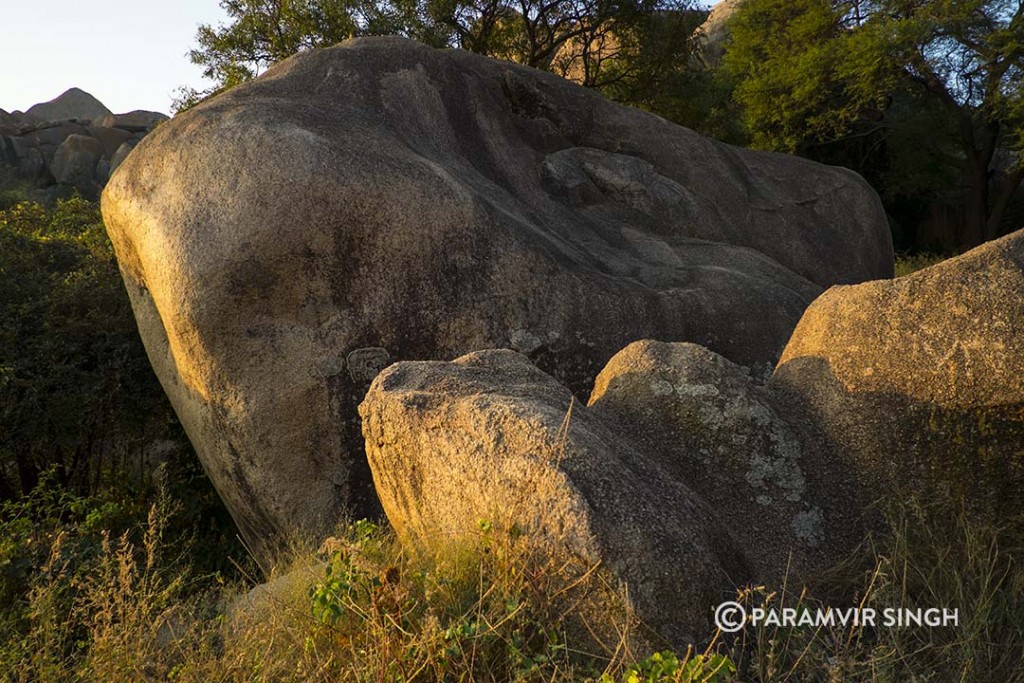
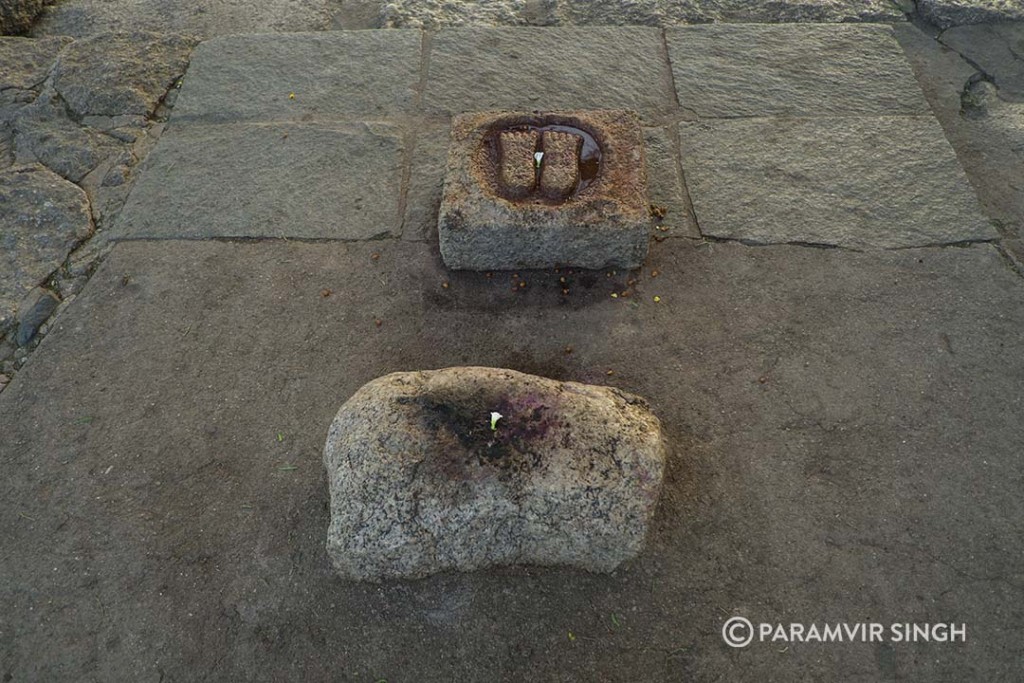
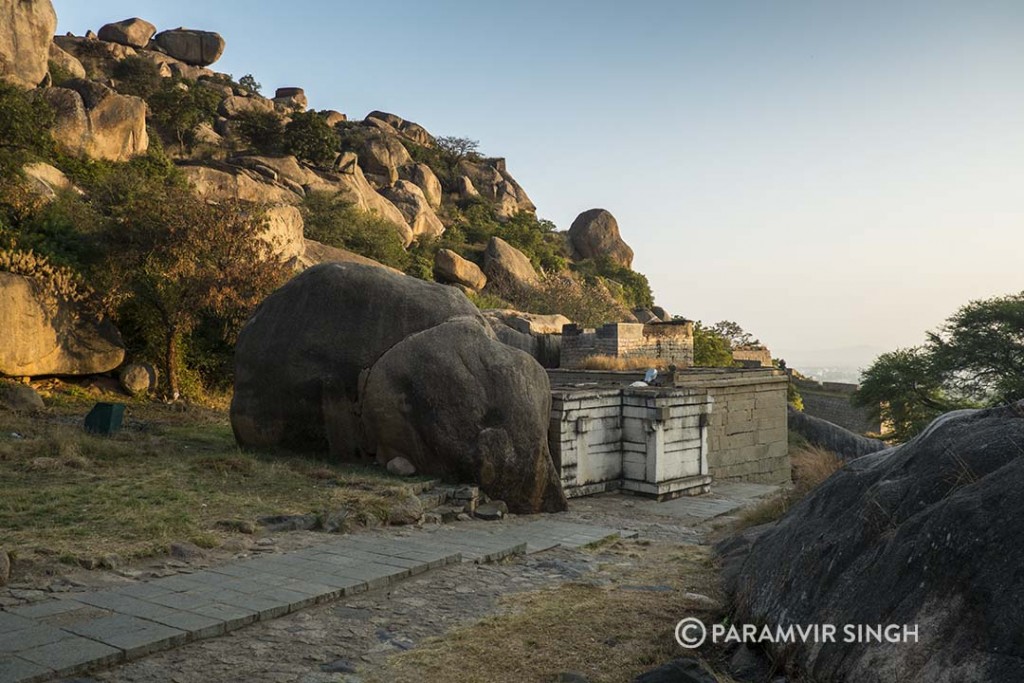
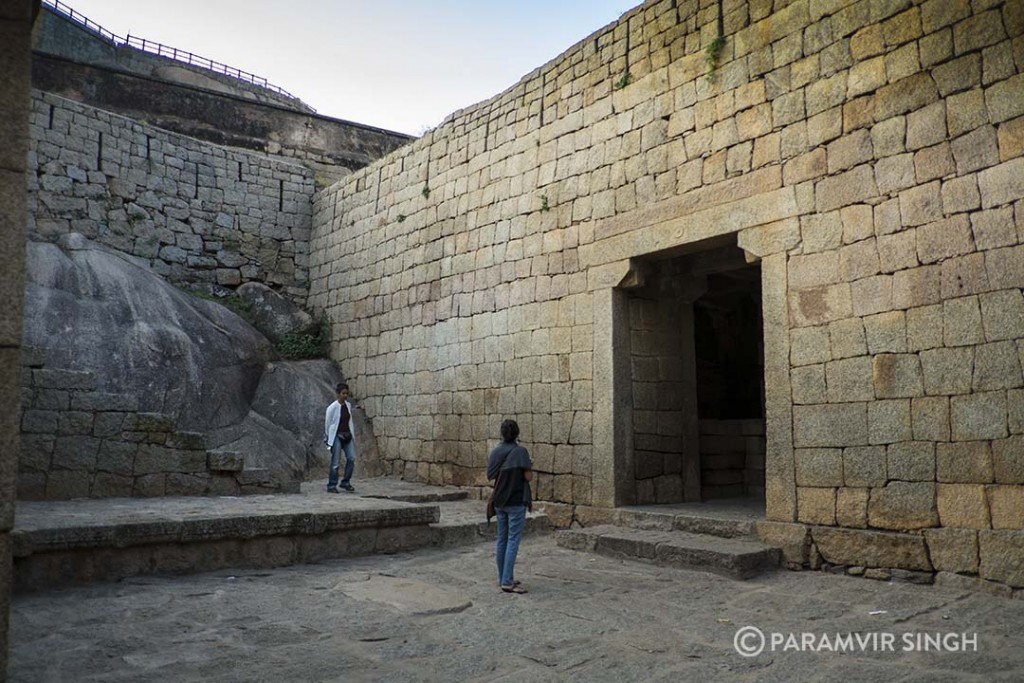
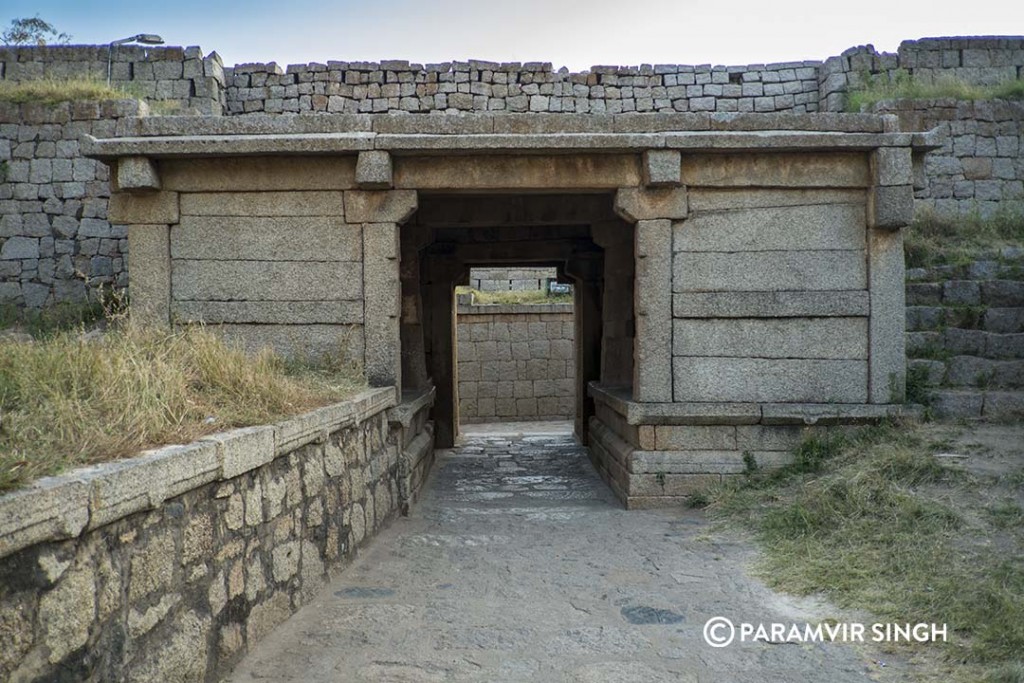
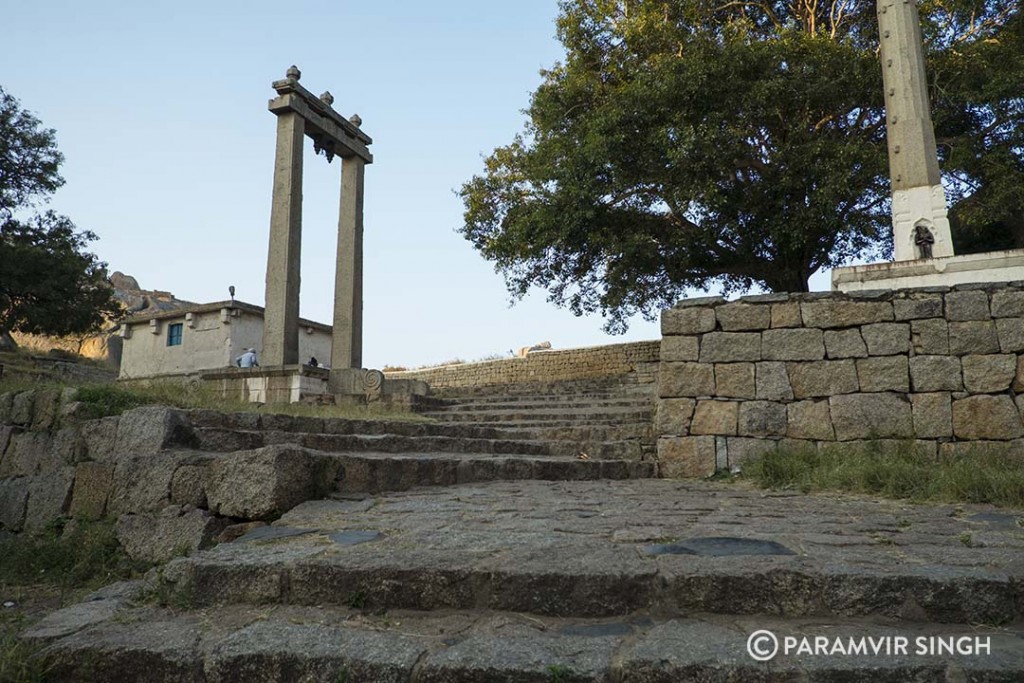
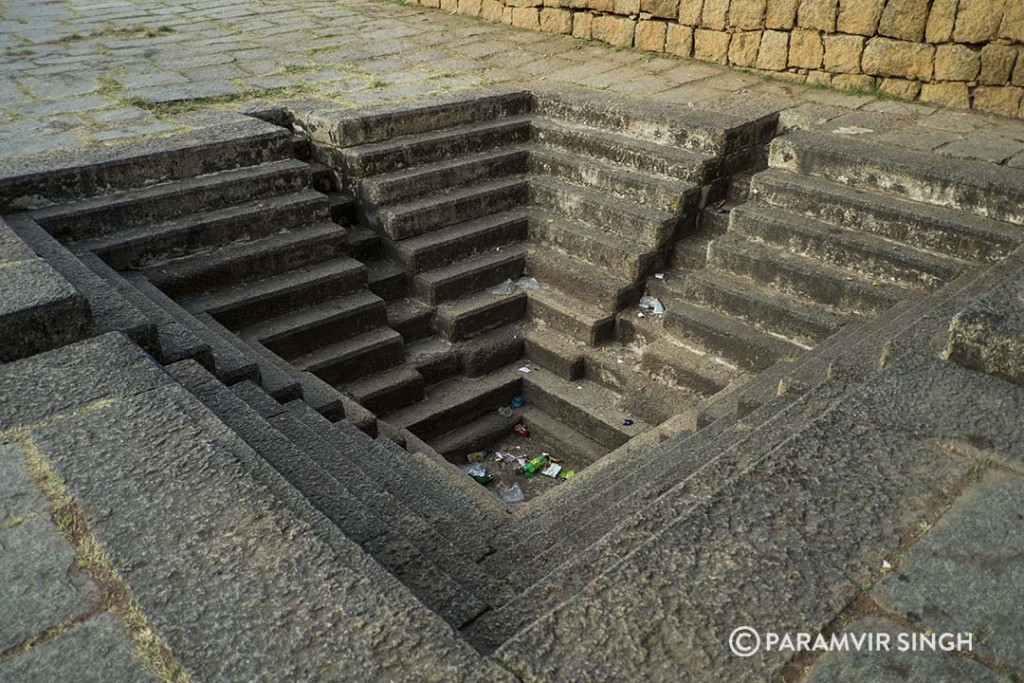
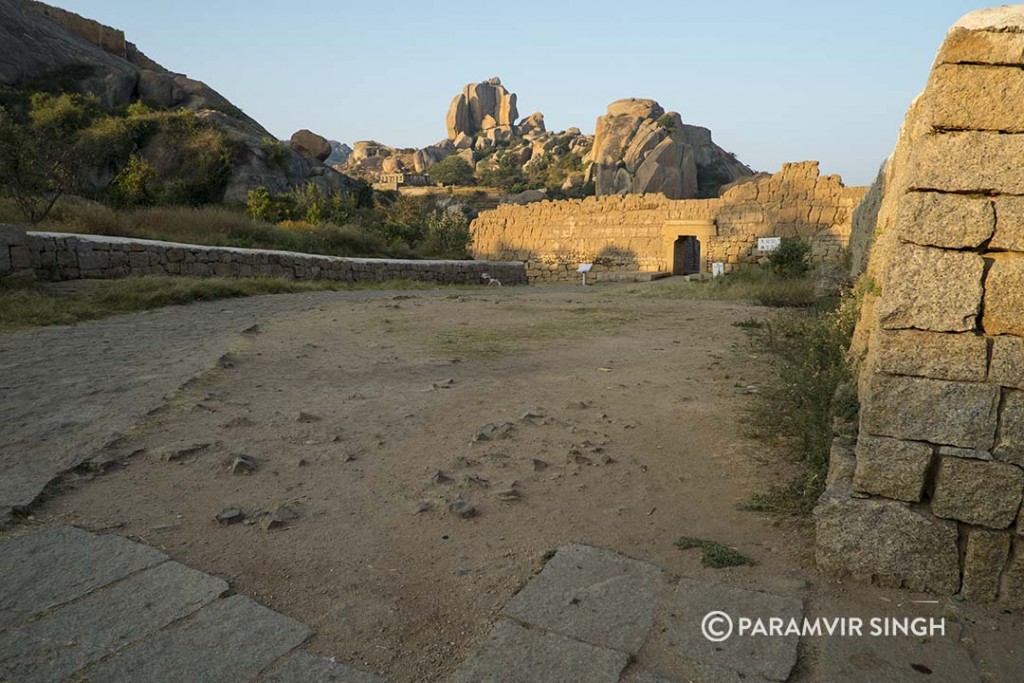
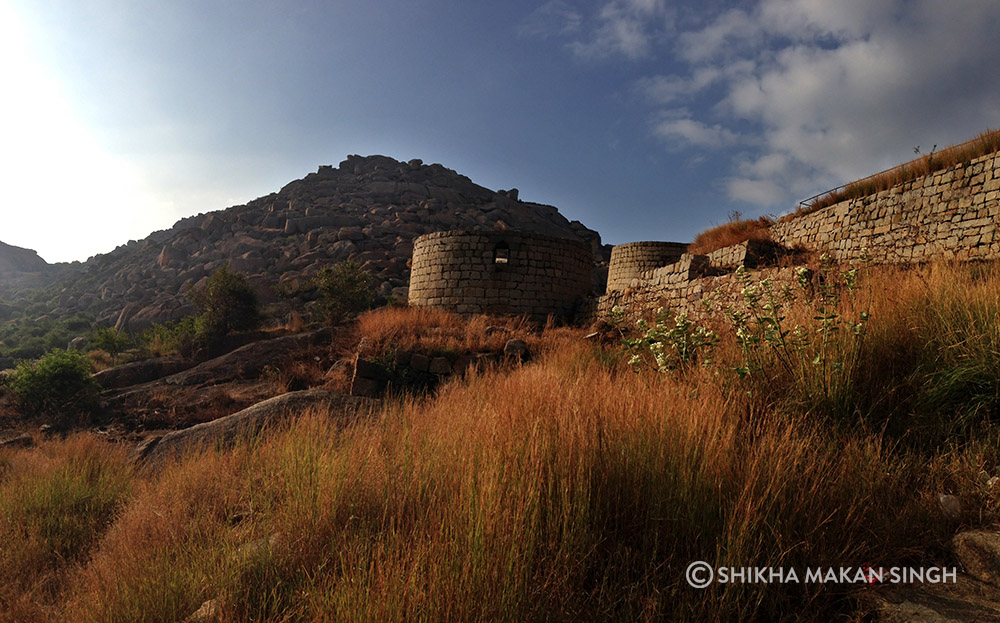
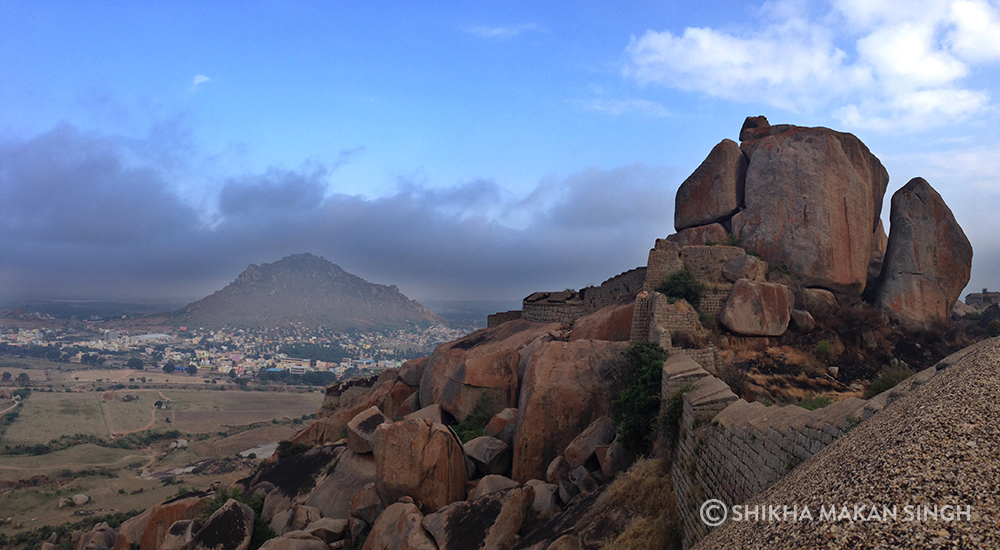
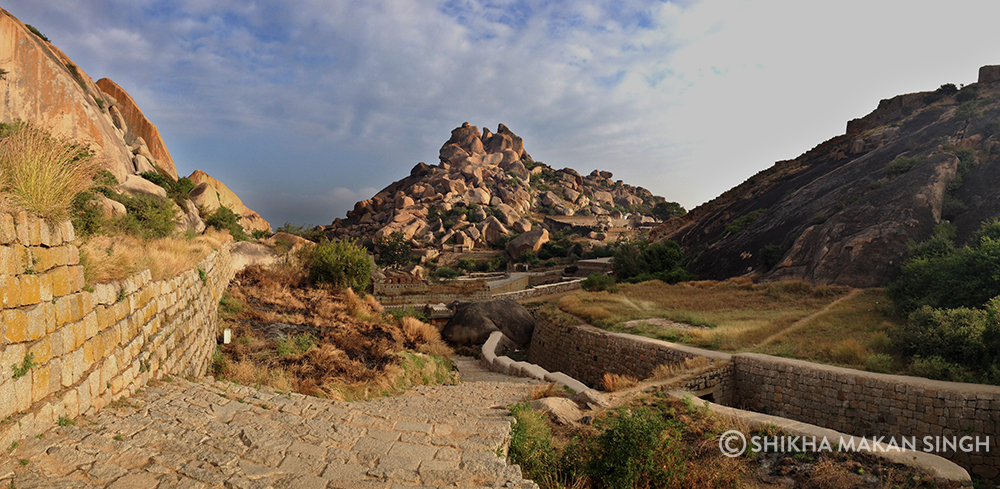
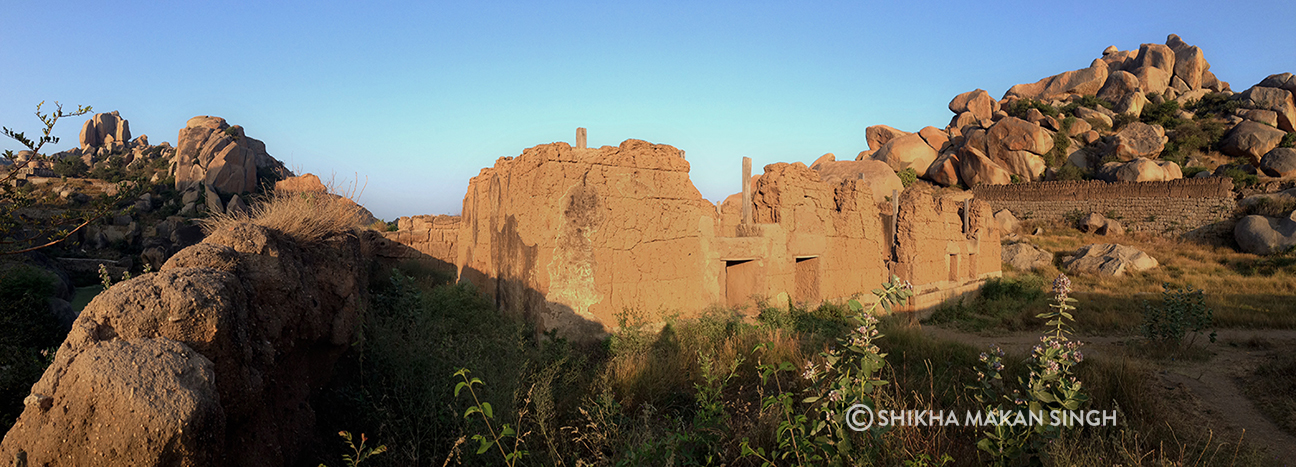
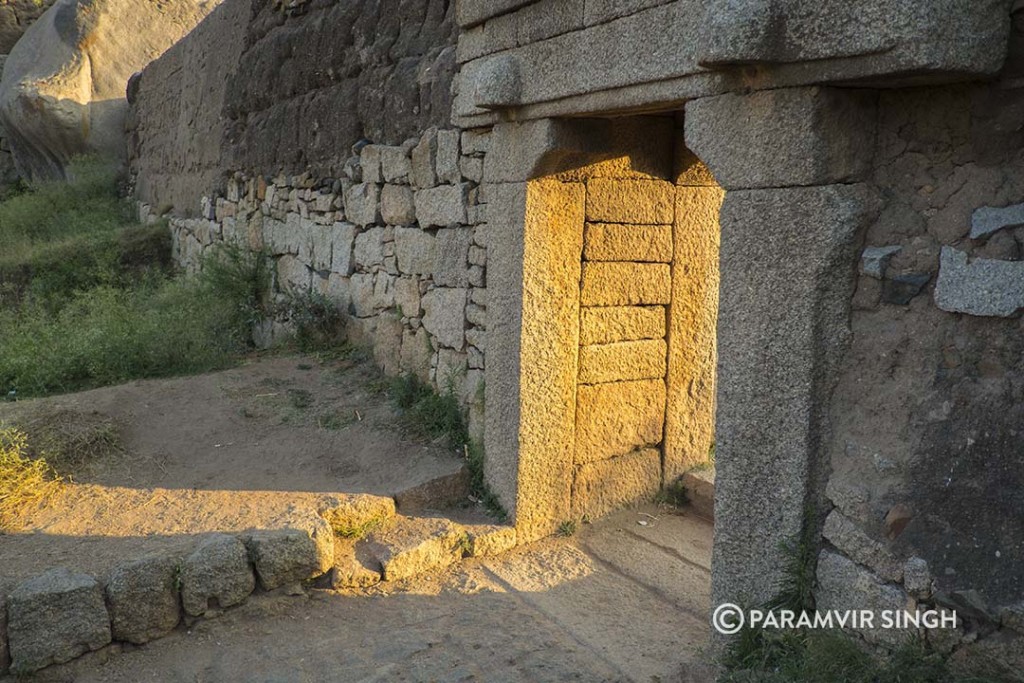
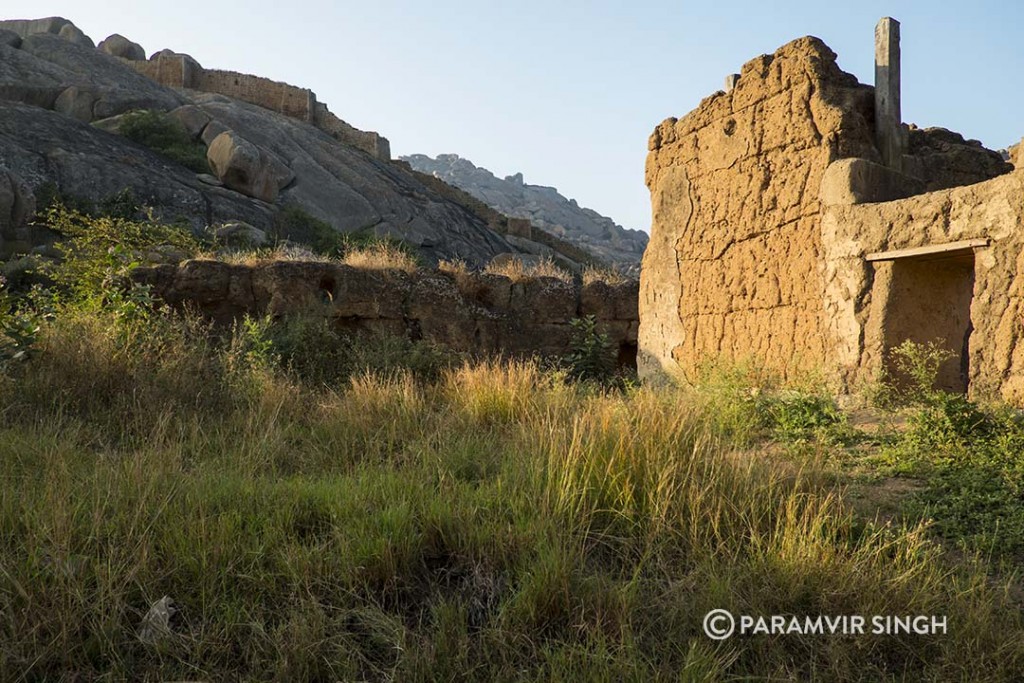
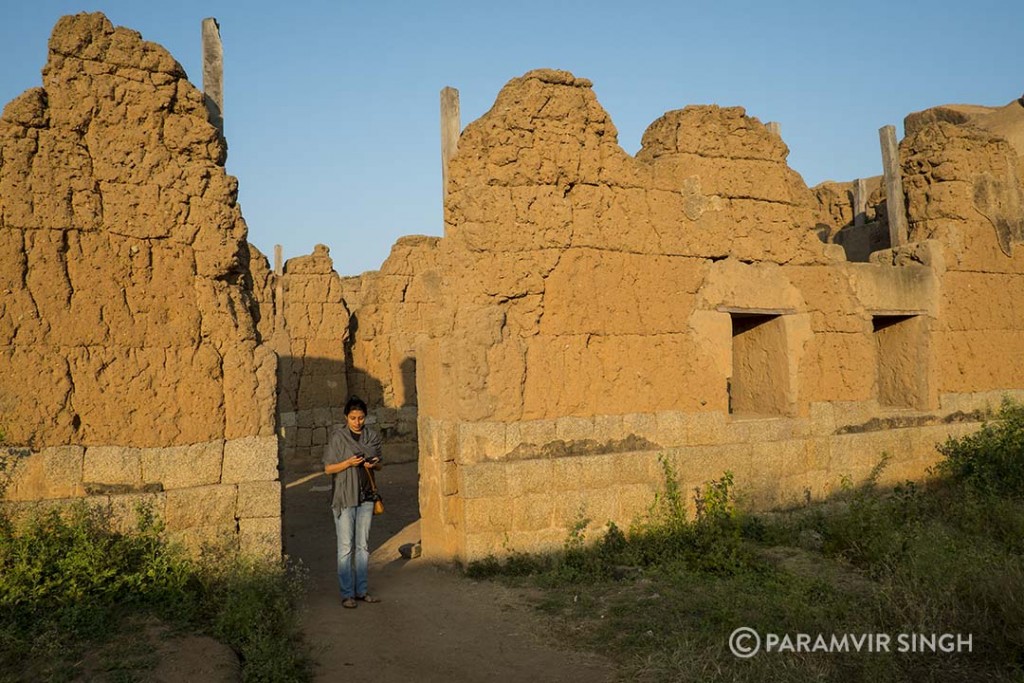
From the Archaeology Survey of India information boards: Building with earth: This building uses one of the world most popular construction materials : Mud.
Mud is popular because it is easy to work with, cheap and easily available. And most importantly, buildings made of it are strong and stay cool during summers. Many houses in this region are still built of mud, using age old techniques.
Preparing mud for construction is like making dough for ‘rotis’. Take soil, add water, knead by stamping on it! You can add broken pottery (like in the wells here), straw or even jaggery to reduce shrinkage and increase the strength of the mud. When the mud is of right consistency, place it directly on the wall base layers, like here. Or shape into bricks, dry and then use to build walls.
Mud’s biggest enemy: Water.
This building, once a mint, still stands because it was built to resist water damage. Because the base is most vulnerable to splashing water, these walls have stone plinths. Plastered water channels safely carry rain water from the roof to the ground without splashing. The roof probably had large overhangs to prevent splashing. And you can still see traces of the lime plaster that further protected the walls from water.
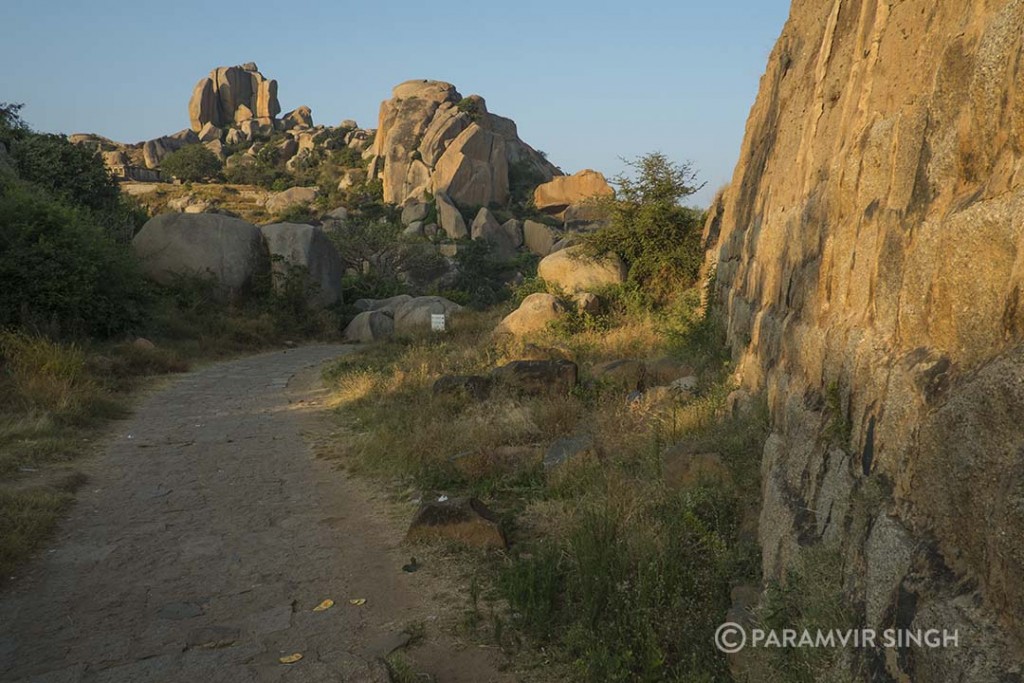
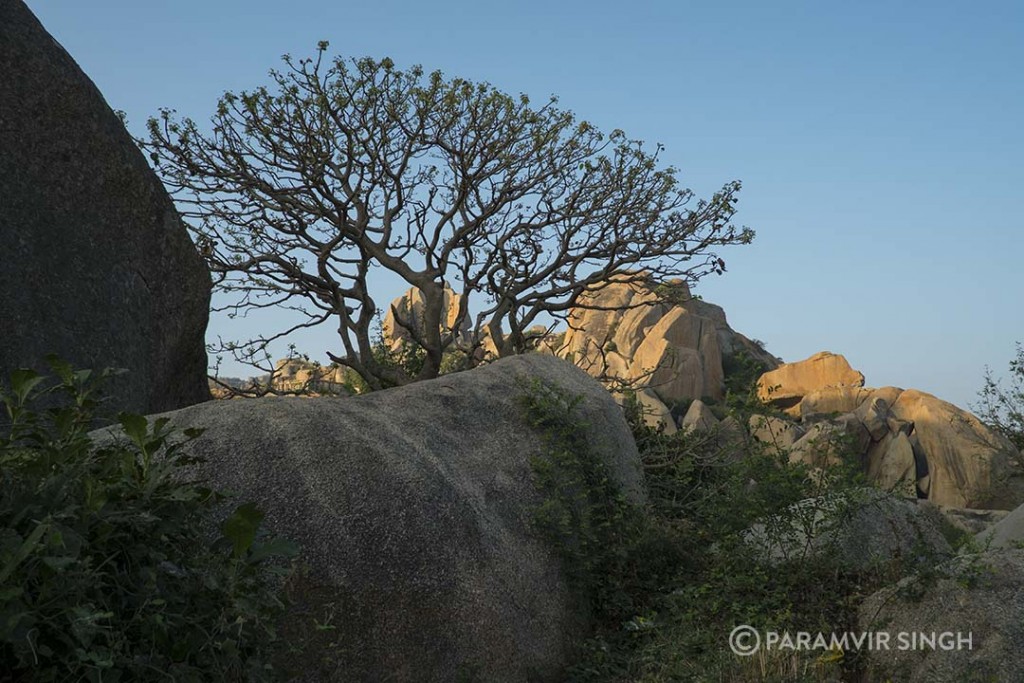
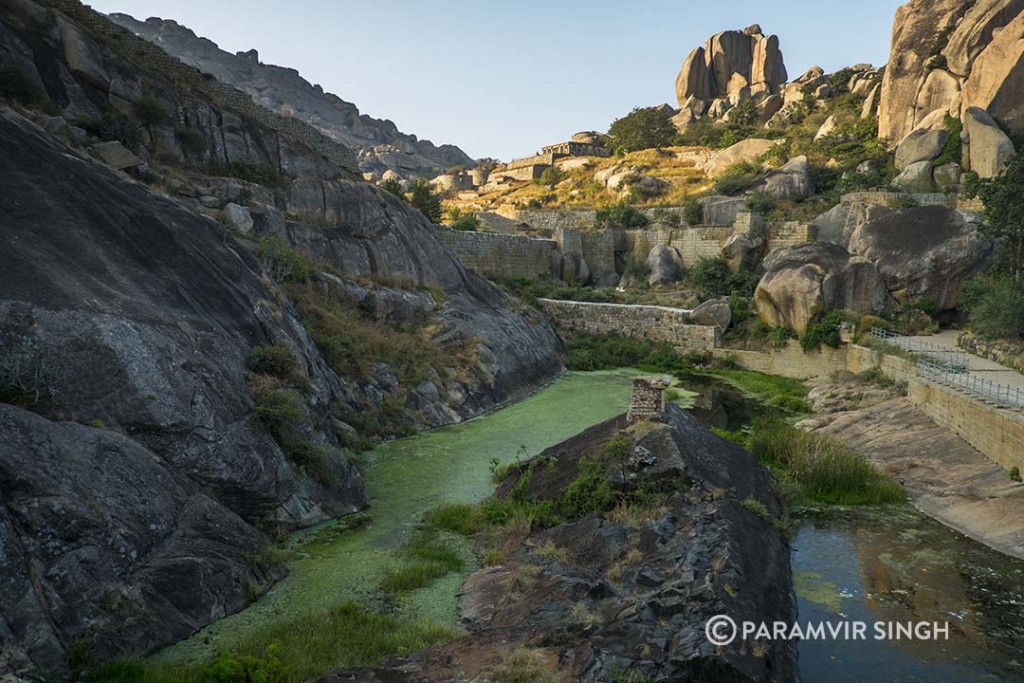
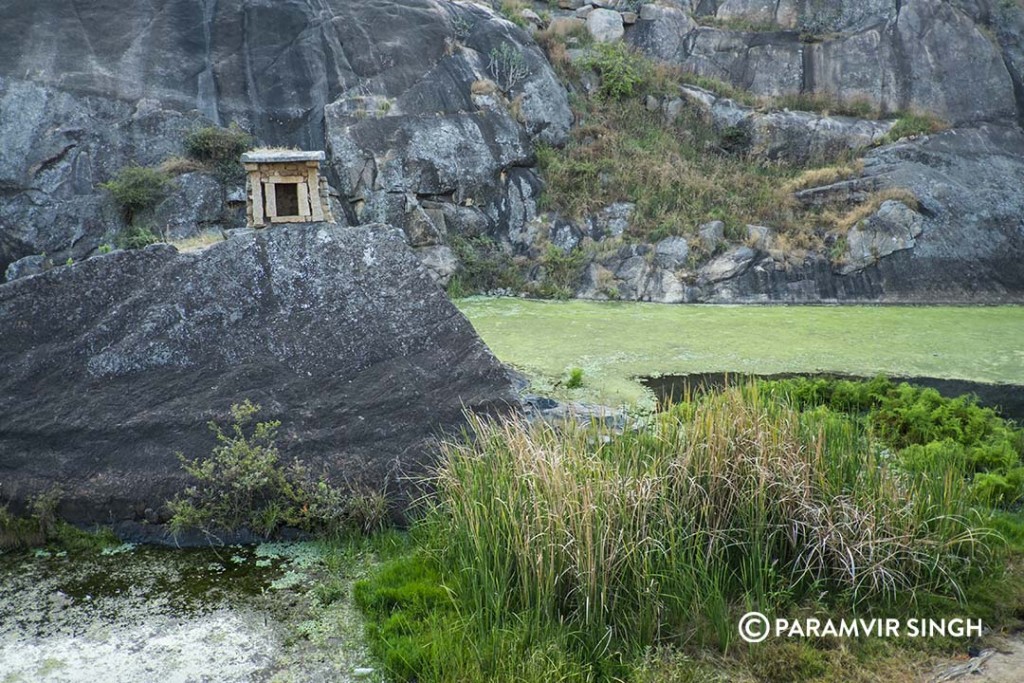
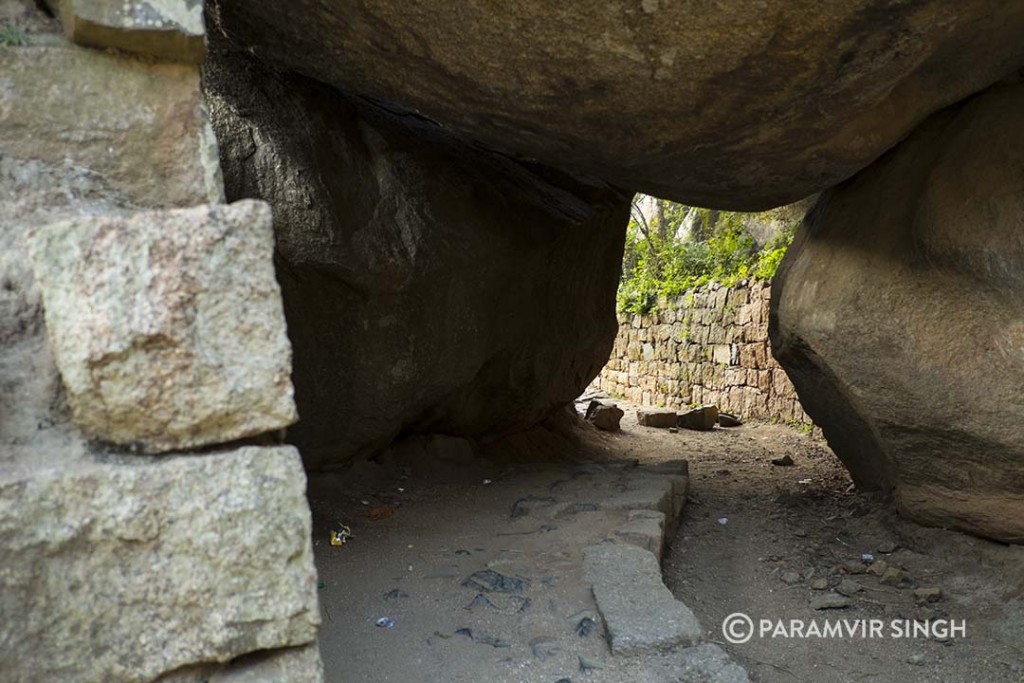
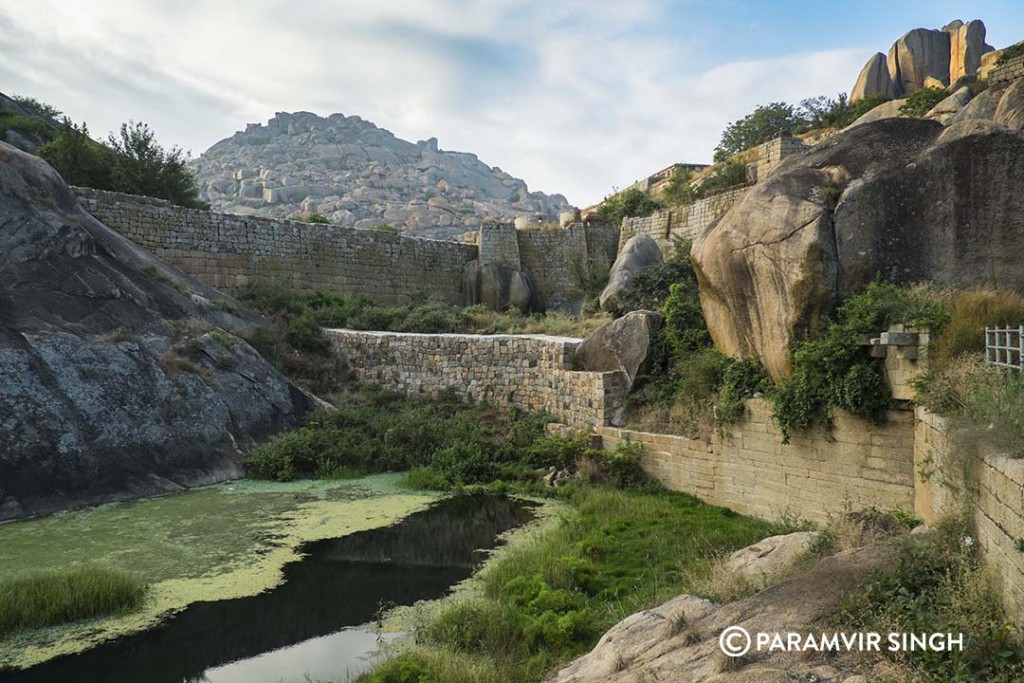
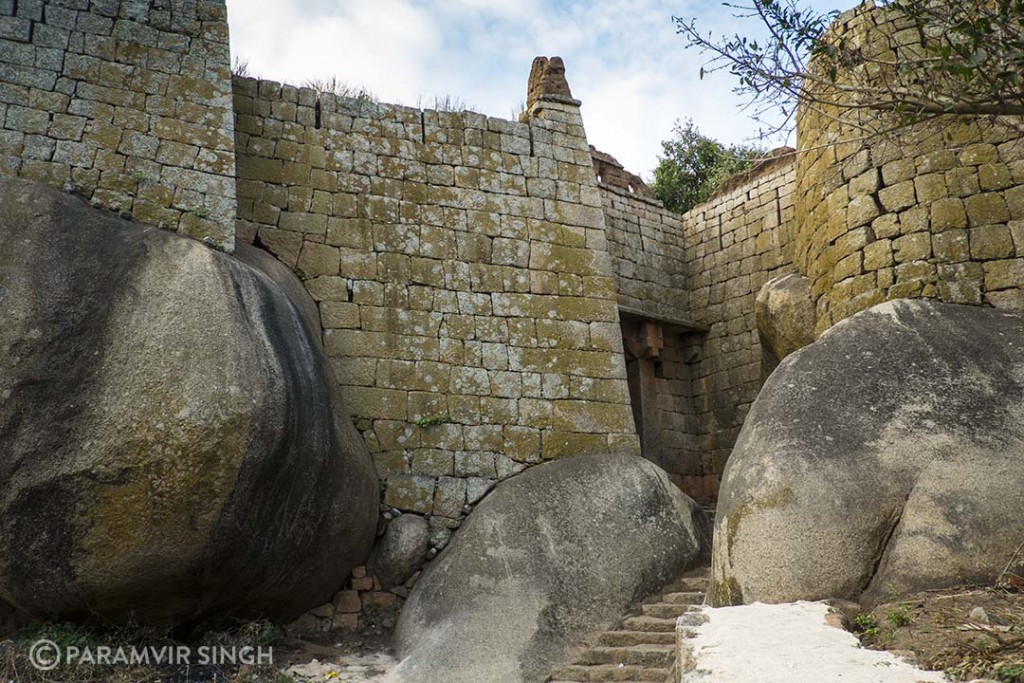
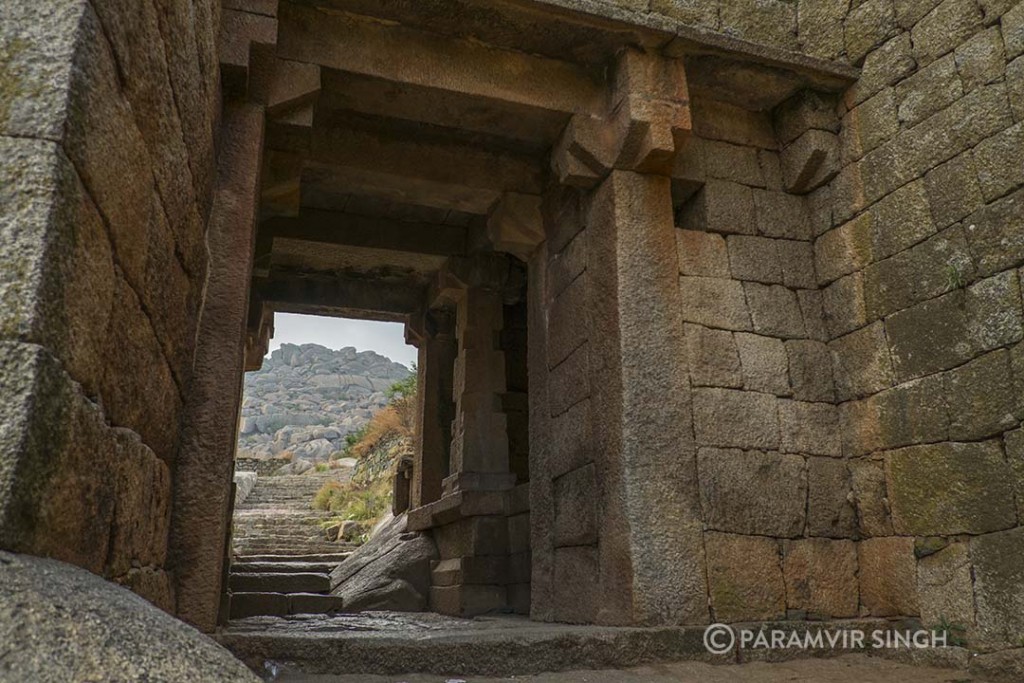
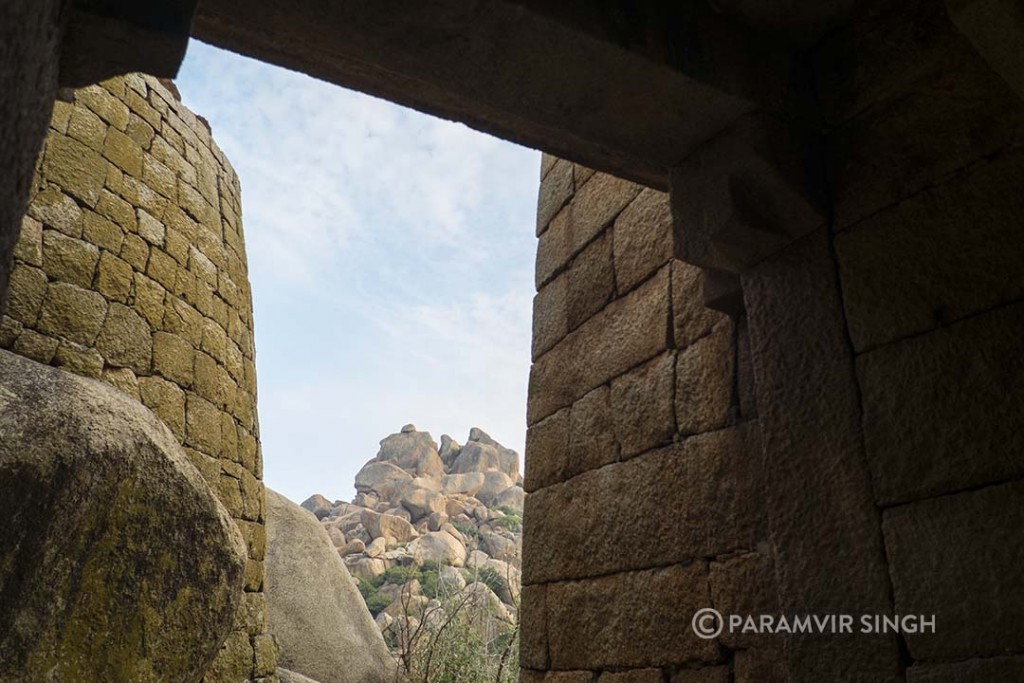
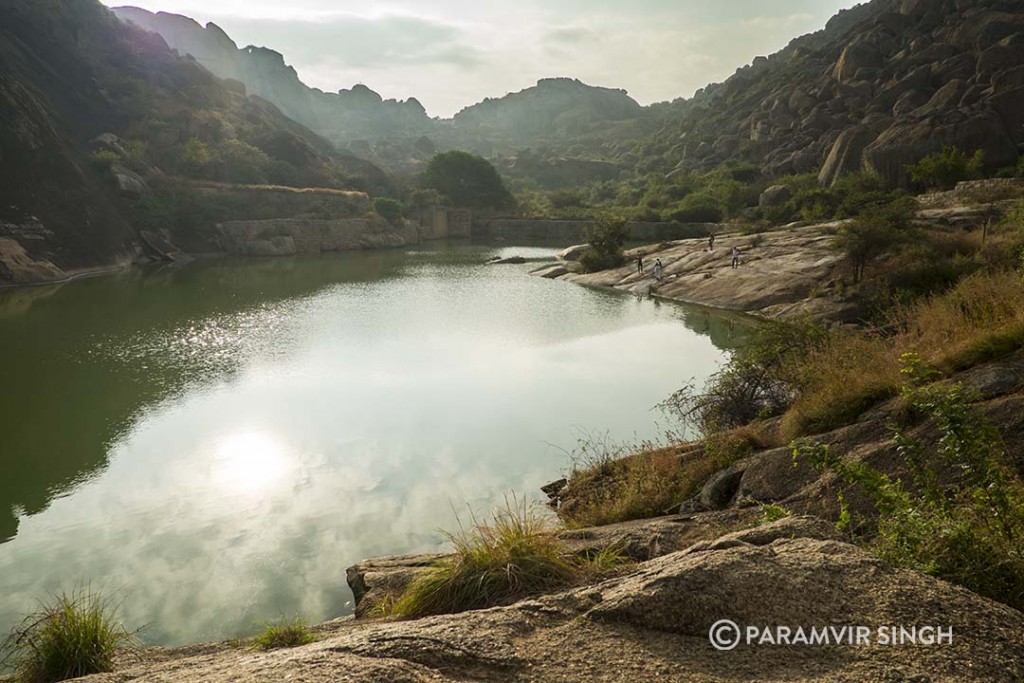
The residence of the Chitradurga Nayakas, is strategically located in the most secure part of the fort. To reach this palace complex, an army would have had to cross seven fort walls. It’s also naturally protected on three sides by hills that would make enemy attacks very difficult indeed. Watch towers on the summits of the hills around the area provided additional protection.
Within the complex are ruins of large palace buildings, quarter for servants and service staff, several rectangular and round granaries, and other buildings. Most of these buildings are built of mud. Among the few stone buildings here are two with vaulted roofs that are on slightly elevated areas. These were probably used as magazines for storing ammunition.
The open ground in front of the palace complex was a fruit garden called the Sringarada Tota. It was provided with channels for irrigation using water from the Gopalaswami Handa.
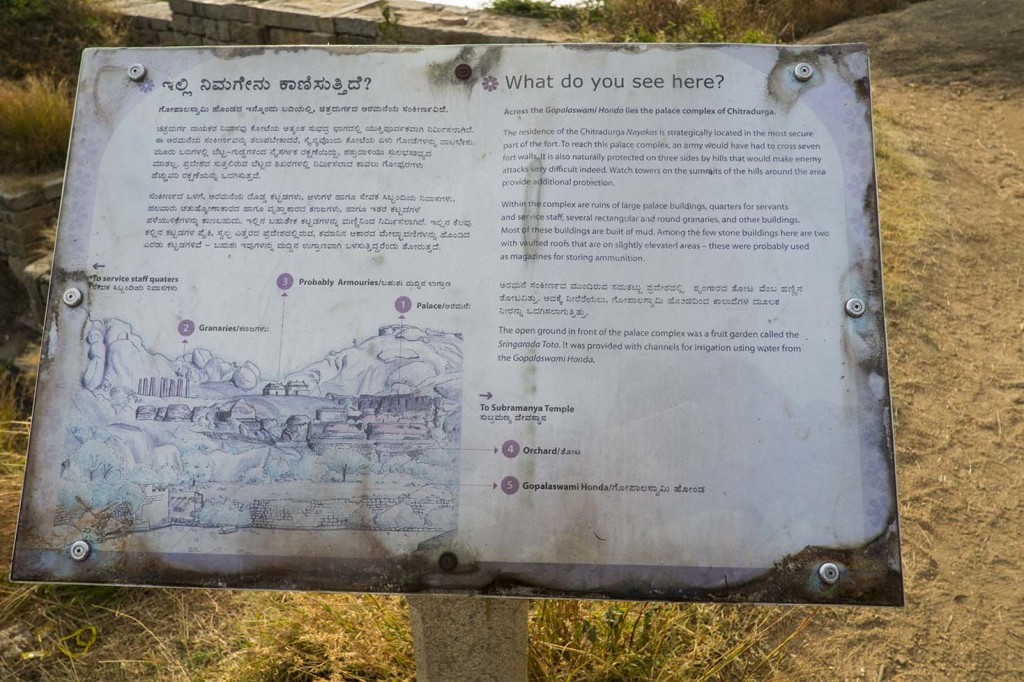
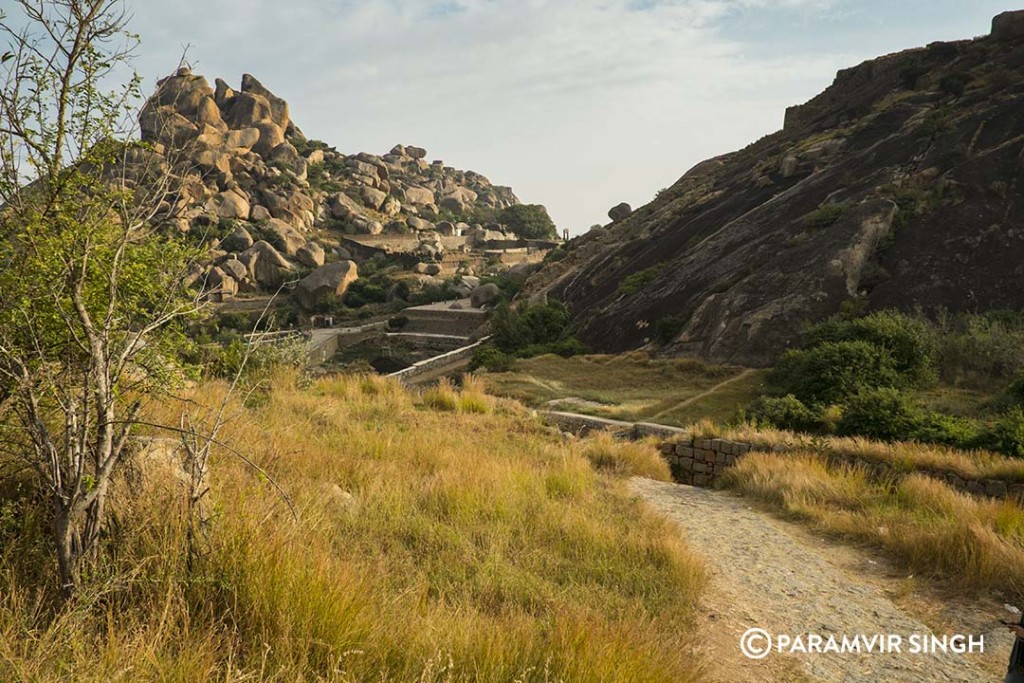
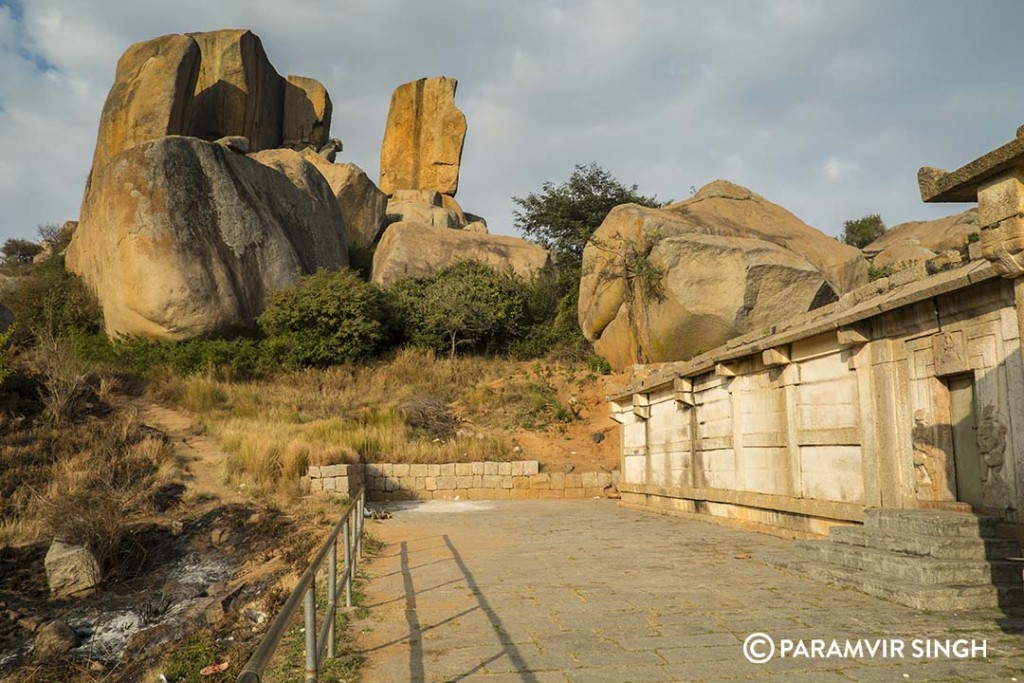
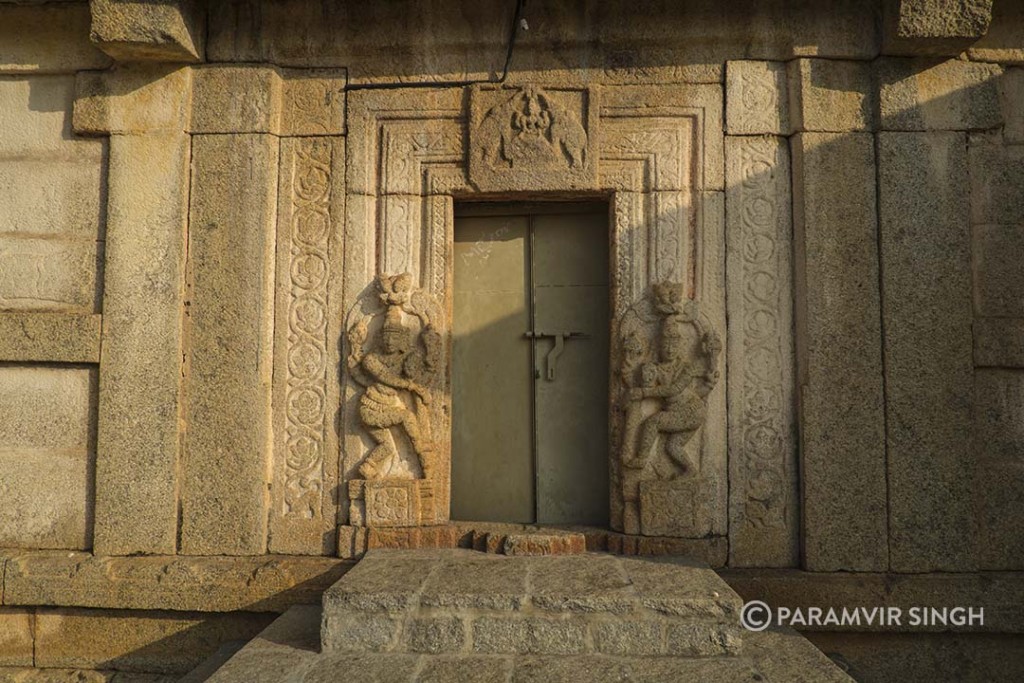
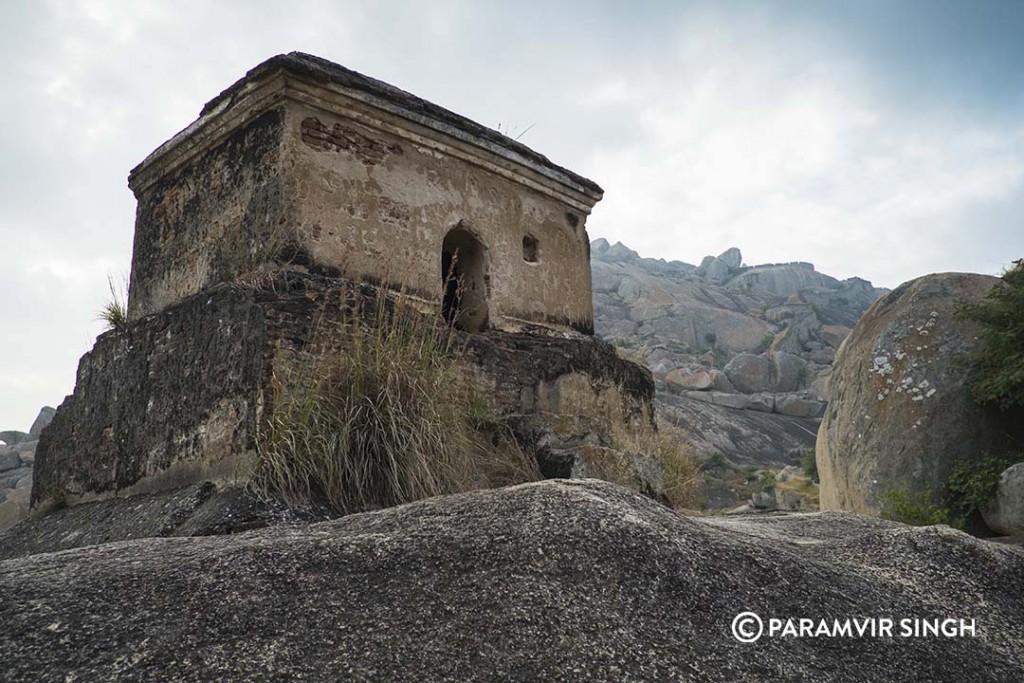
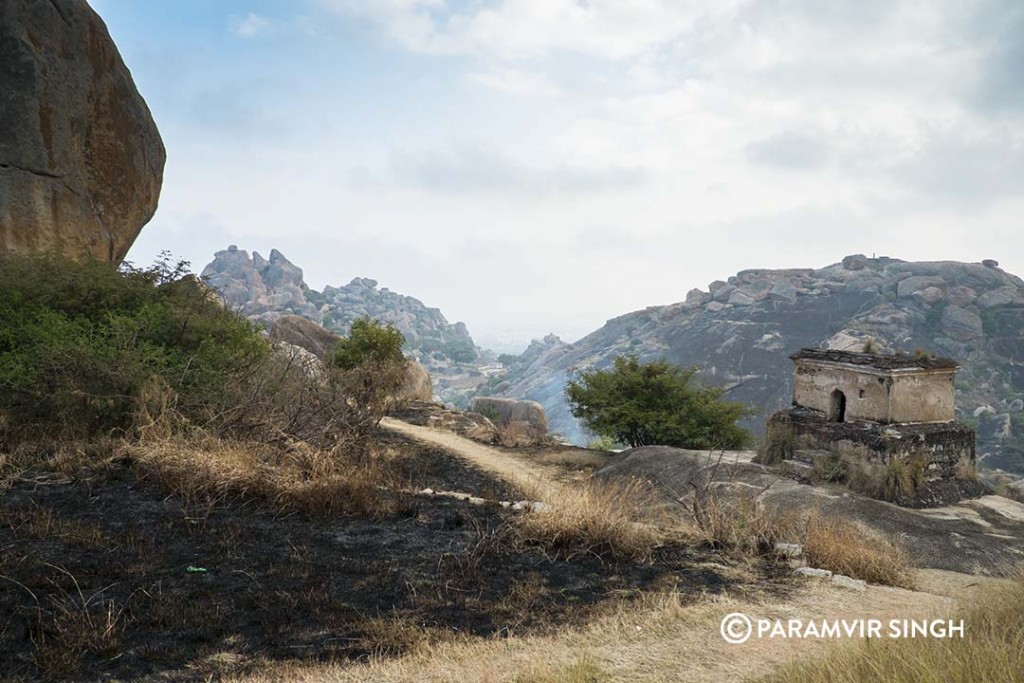
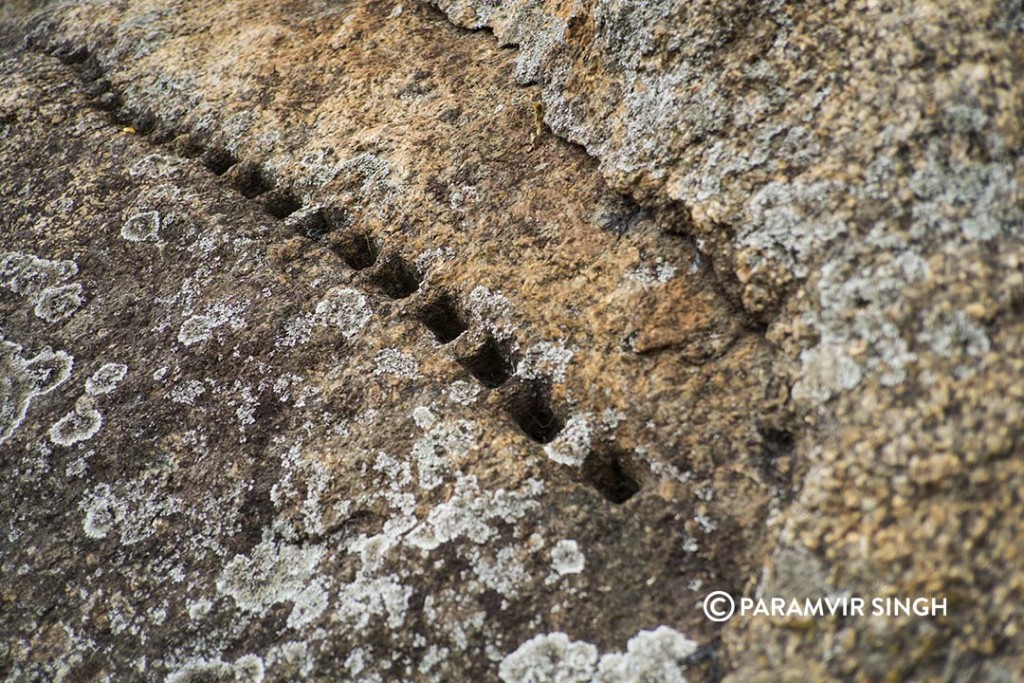
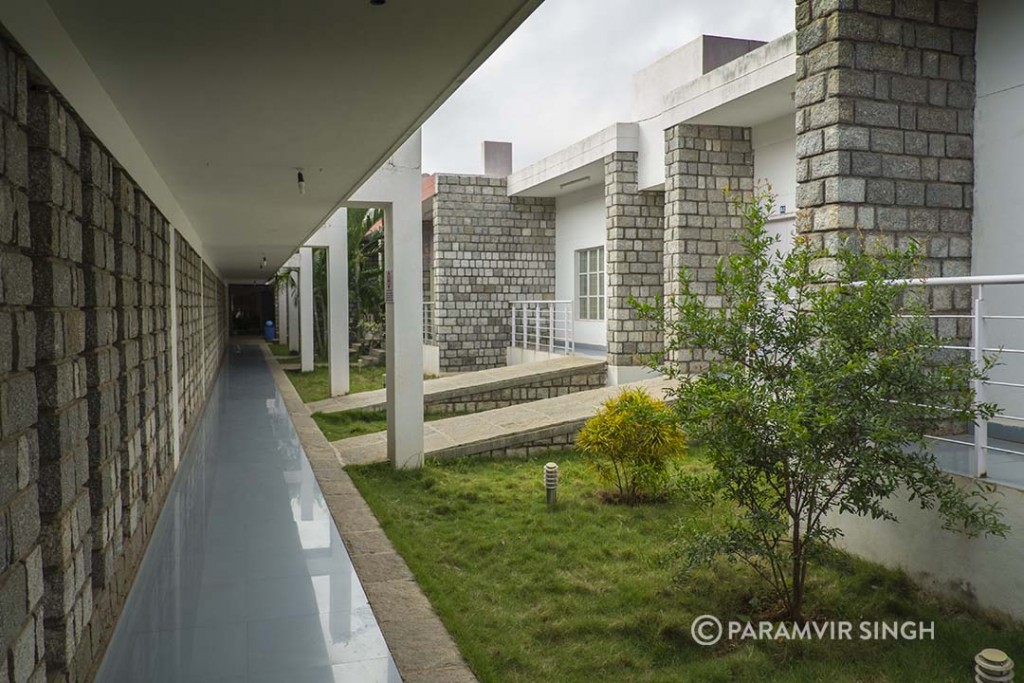
[box type=”success” width=”100%” ]Getting there: Chitradurga is 205 km from Bangalore towards Pune on the NH4 (Bangalore – Pune – Mumbai) highway. Staying: We stayed at a hotel on the highway we did not like. However, the KTDC has a fantastic hotel right opposite the fort called Hotel Mayura Yatri Niwas, Chitradurga. It’s very clean and has a very good restaurant. Hotel Mayura YatriNiwas Next to Maharani College,opposite to Fort Chitradurga- 577 501 Tel:0819 4234342 Manager:Mr.Ramesh Malya 9481530355/8970656600 Email: info@karnatakaholidays.net[/box]


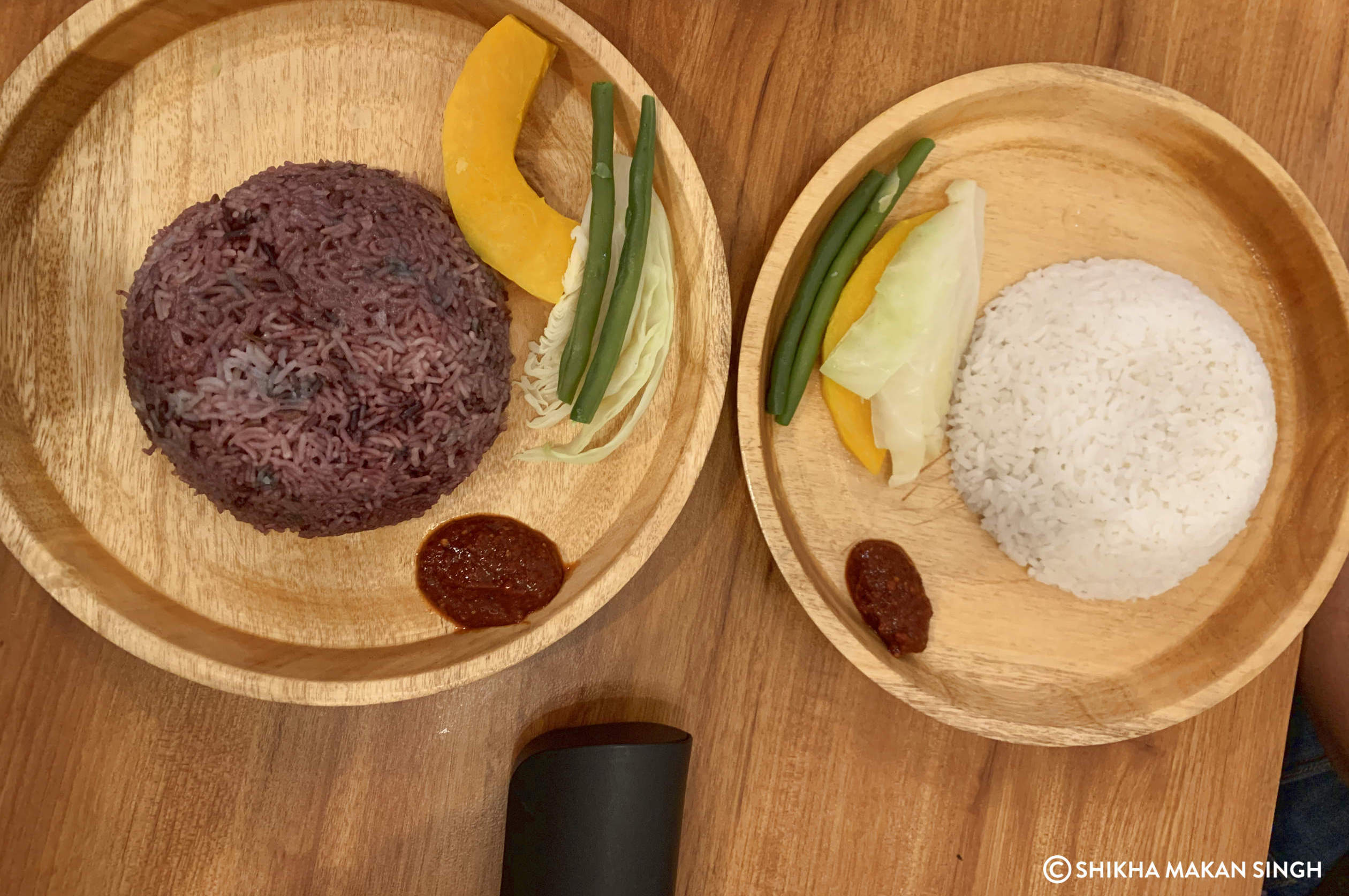
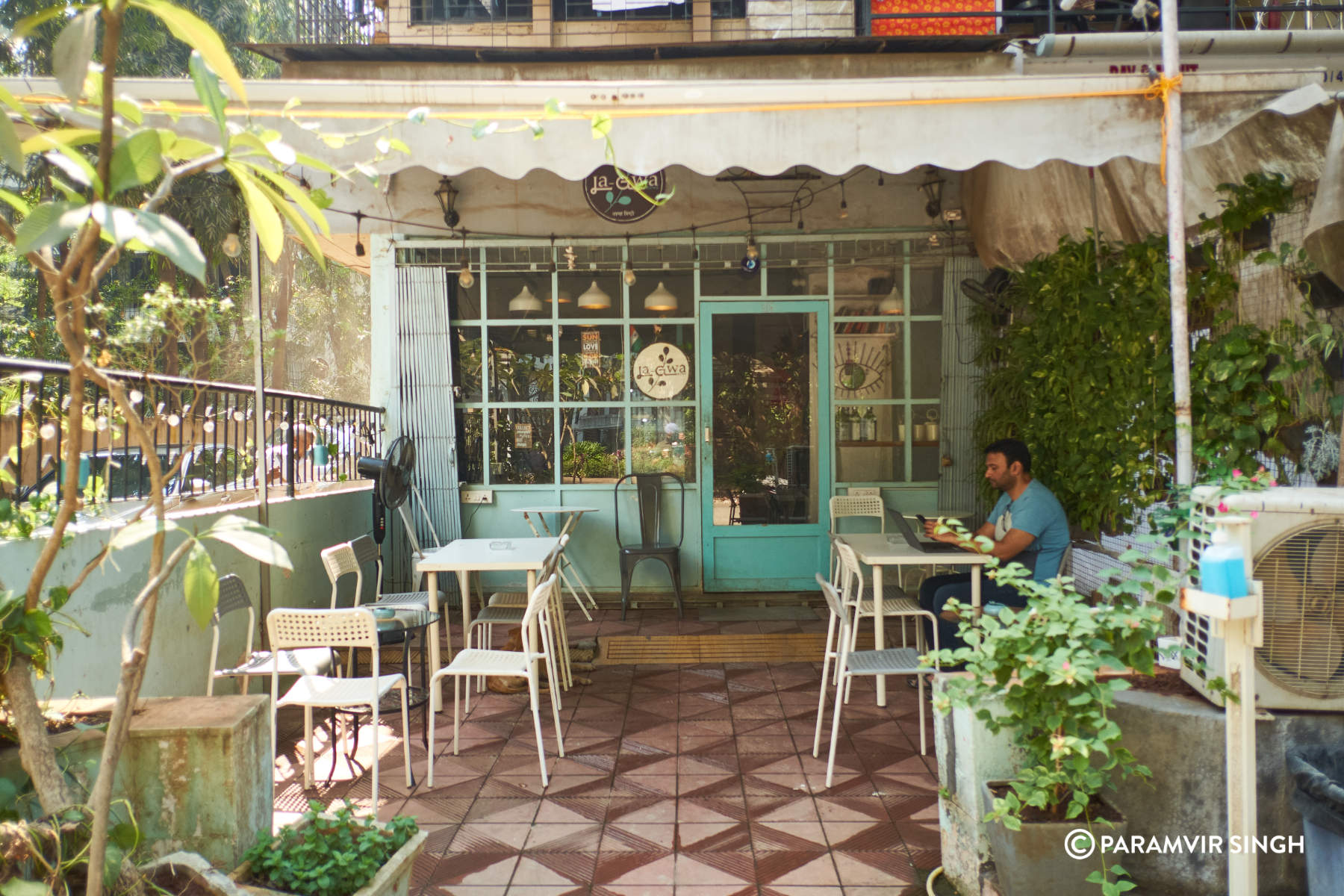
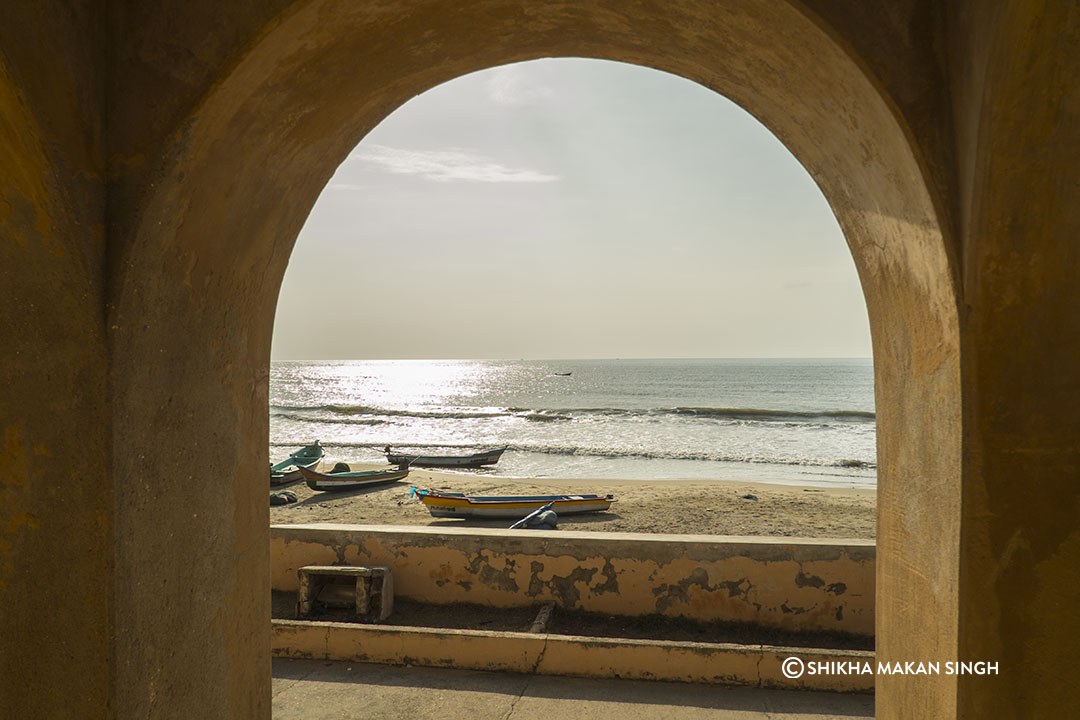
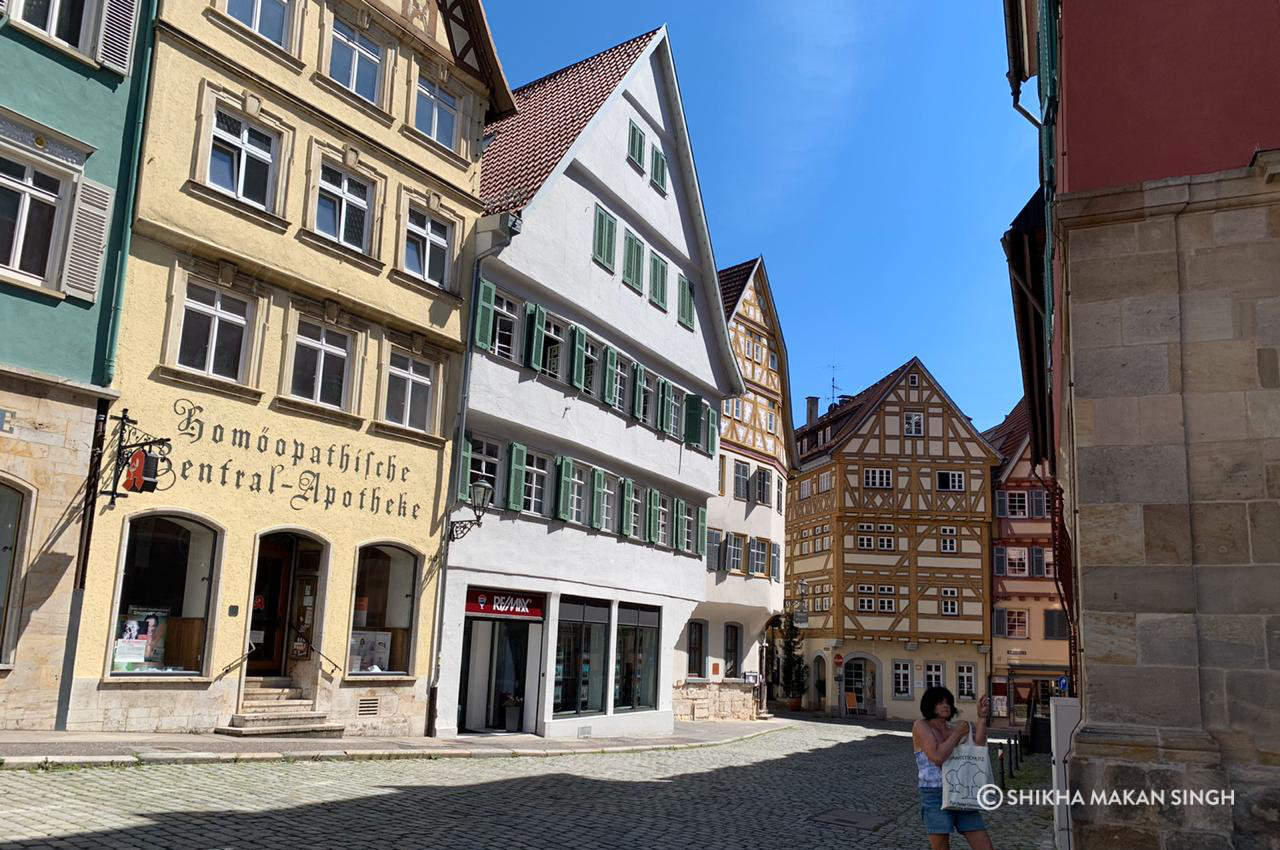
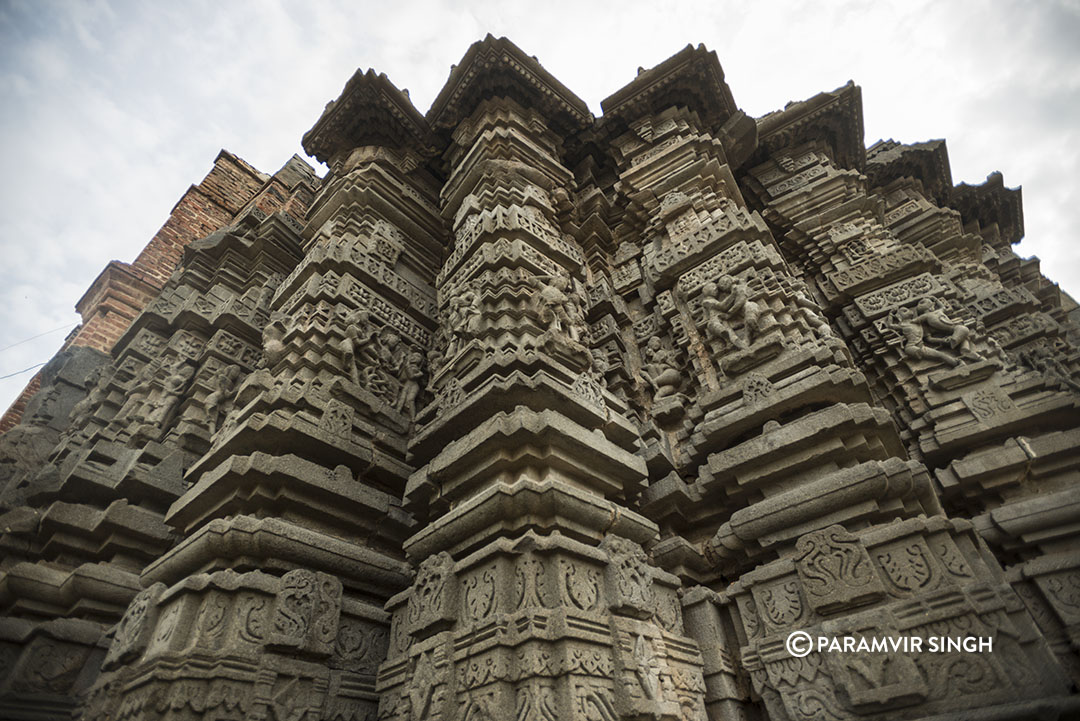
Wow, this is soooo beautiful! The KTDC hotel looks nice too.
Simply Loved it! Great photos, great information all to the point!
Loved reading it! Looking forward to more posts from you.
Thanks Arun! This place is so not known!
Thanks Pranav! Keep checking, some new trips will be posted soon.
Nice photos and beautiful fort.
Absolutely loved your works ! 🙂
Thanks Surya! 🙂
Amazing place, it’s look like HAMPI
Beautifully captured
Thanks!
A great fort… among hills and rocks…temples, rock passages, water body, reservoir, the fort is well constructed for sure(: nice… you have showed the fort very well on your blog.
Thanks Maria. It’s a beautiful fort!
Hello, Thanks for sharing such a fantastic blog.I really appreciate your blog to share most information about hidden fort Chitradurga…nice blog…useful information. I will there with my friends…..